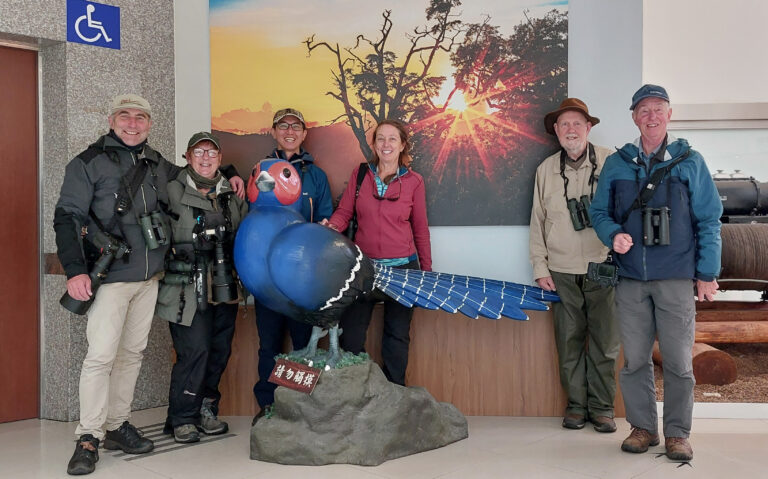
So, after what seems a lifetime in the planning, finally, here we are in Taiwan, less than three weeks after the biggest earthquake in 25 years hit the east coast of this island with a force measuring 7.4 on the Richter Scale! Ironically, in the hotel on our first night in Taipei, at around 2.15am, the whole building palpably sways for several seconds, due to an earth tremour, which is a most bizarre feeling.
Our first day’s birding here coincides with John’s birthday, so what a way to spend it, beginning with a visit, via the metro, to the botanical gardens in Taipei. Emerging from the metro onto the busy streets, we soon spot Oriental Turtle Dove and Javan Myna perched on traffic lights, and then our first endemic bird, the Taiwan Barbet. Once inside the botanical gardens, we find the juxtaposition of familiar Moorhens amid exotic deep pink lotus flowers and brightly coloured dragonflies, followed shortly afterwards by birds like Black-naped Monarch, Light-vented Bulbul, White-rumped Shama and Swinhoe’s White-eye. Next, we find three more endemic birds, Taiwan and Black-necklaced Scimitar Babblers and the impressively large and long-tailed Taiwan Blue Magpie, as well as the endemic sub-species of Black Bulbul, plus Spotted Dove, a wintering Arctic Warbler and a most obliging Malayan Night Heron, happy to pose for portraits from as close as just a few feet! Moving on, we find a noisy Grey Treepie and finally White-breasted Waterhen. Just outside the gardens, we also find Asian Glossy and Black-collared Starlings, Oriental Magpie and Red Collared Dove, as well as a Crested Goshawk in a tree beside a very busy crossroads!
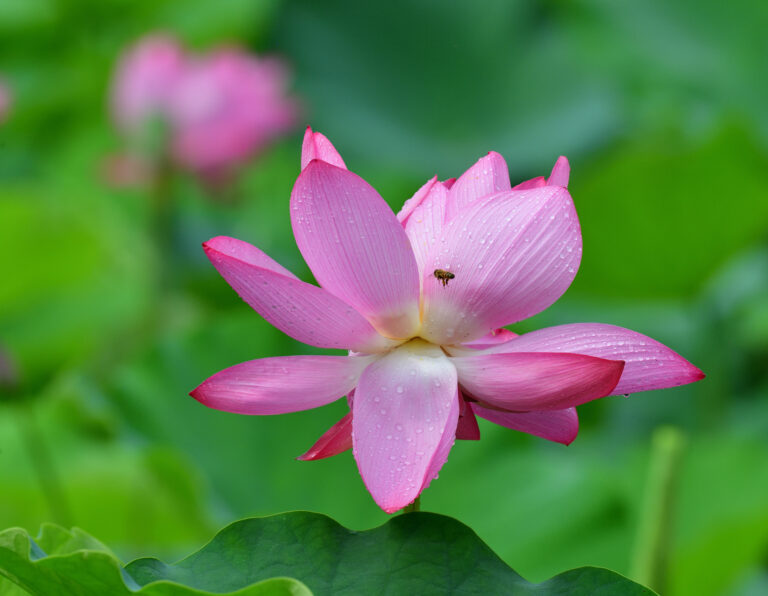
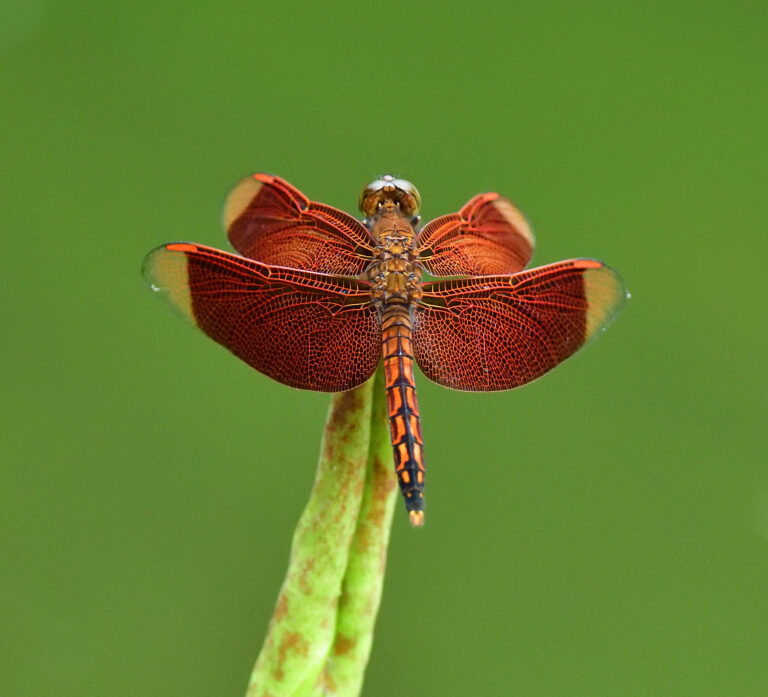


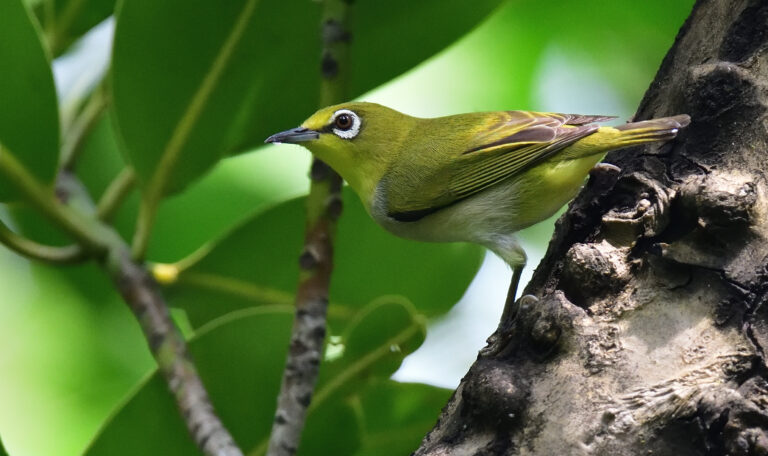
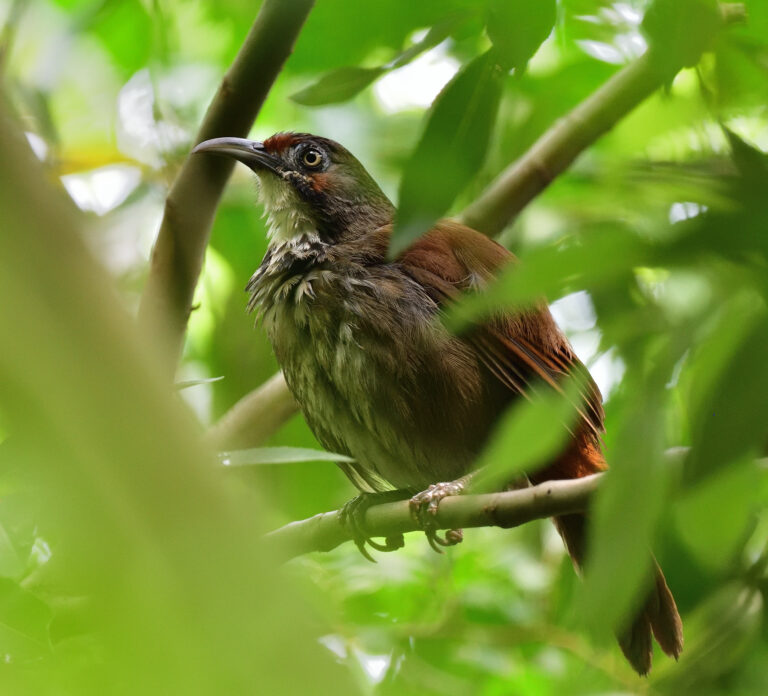
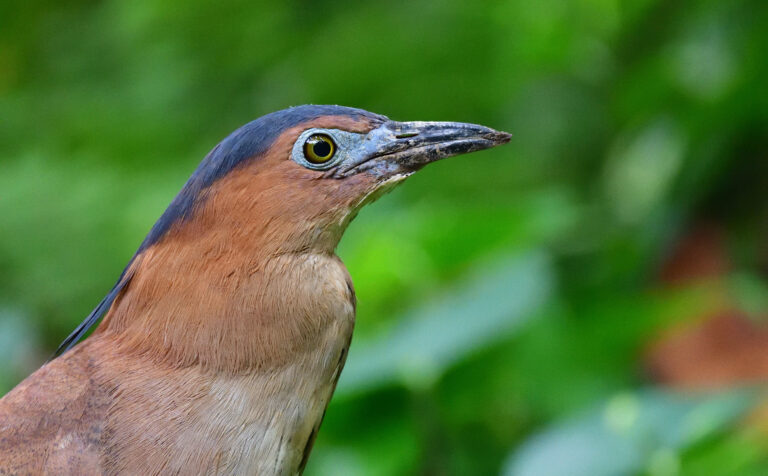
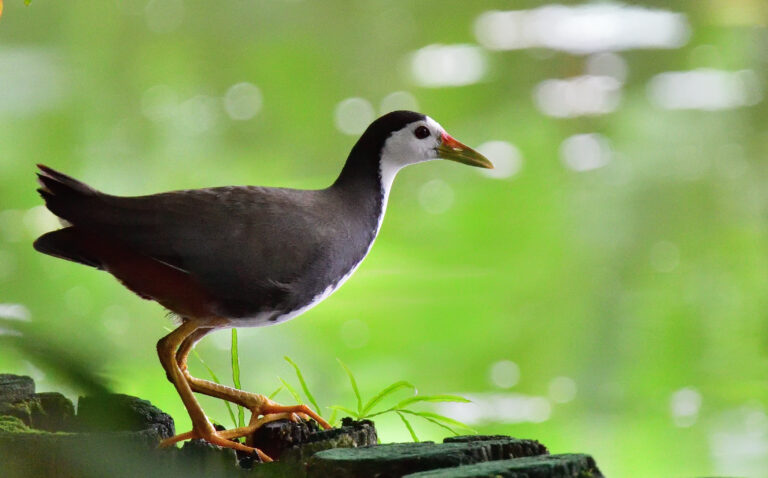
After lunch in the Maritime Museum, we visit the Chiang Kai-Shek Memorial Park with its impressive traditional Chinese architecture, and then get back on the metro taking us two stops to Daan Park, across the road from our hotel. Just inside the entrance, we spot another Crested Goshawk, which shows really well while trying to raid the drey of a Pallas’s Squirrel, and then we find a fruiting tree attracting Light-vented Bulbul, Swinhoe’s White-eye, Taiwan Barbet and a White-bellied Green Pigeon, appearing so heavily gorged on the fruits that it seems unable to move, even though we approach to within ten feet of it! Moving on to an open grassy area, we find a male Oriental Magpie Robin and a small mixed flock of Javan and slightly larger and browner Common Mynas. Meanwhile, a lake in the park is home to a mixed ‘rookery’ of Little and Cattle Egrets in their stunning breeding finery alongside hundreds of Black-crowned Night Herons.


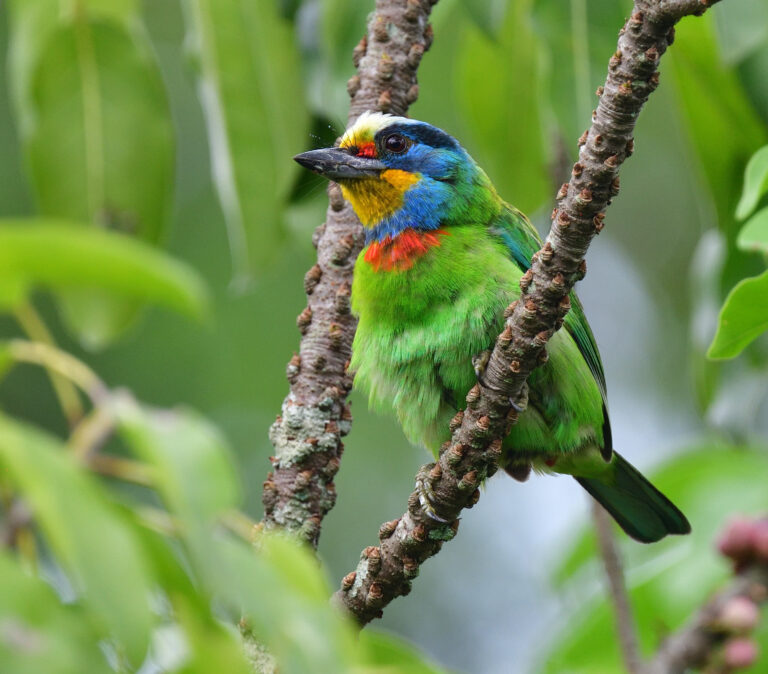
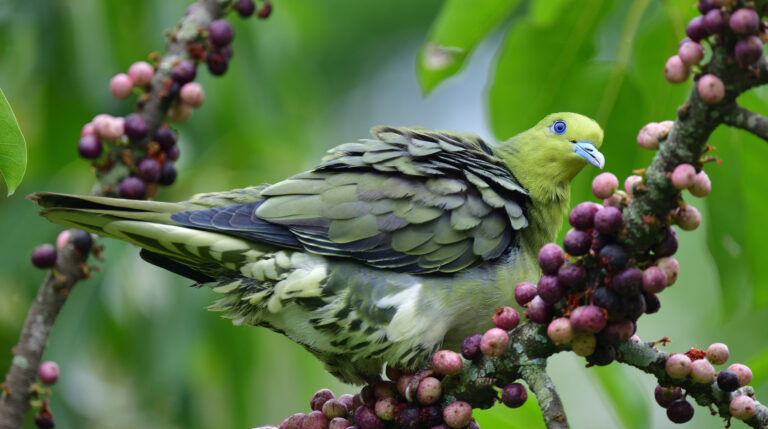
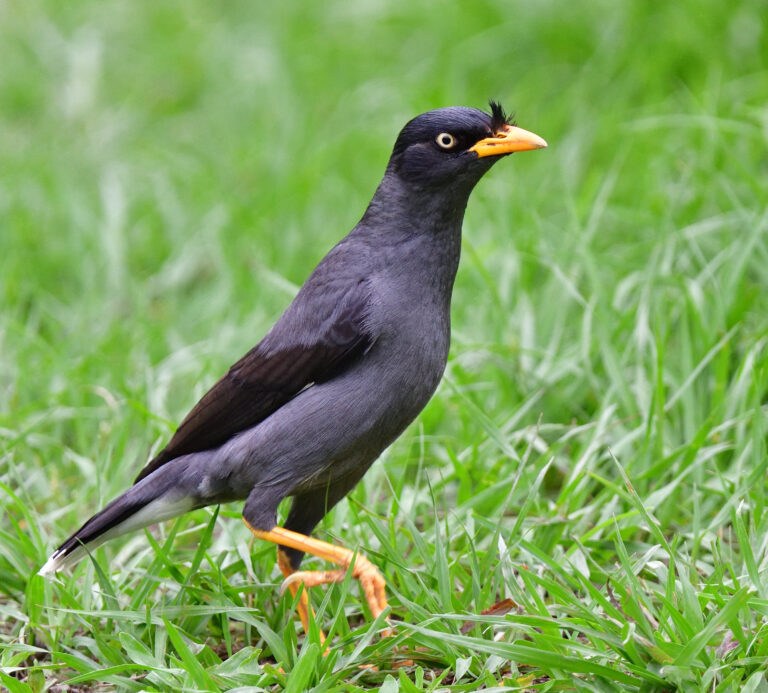
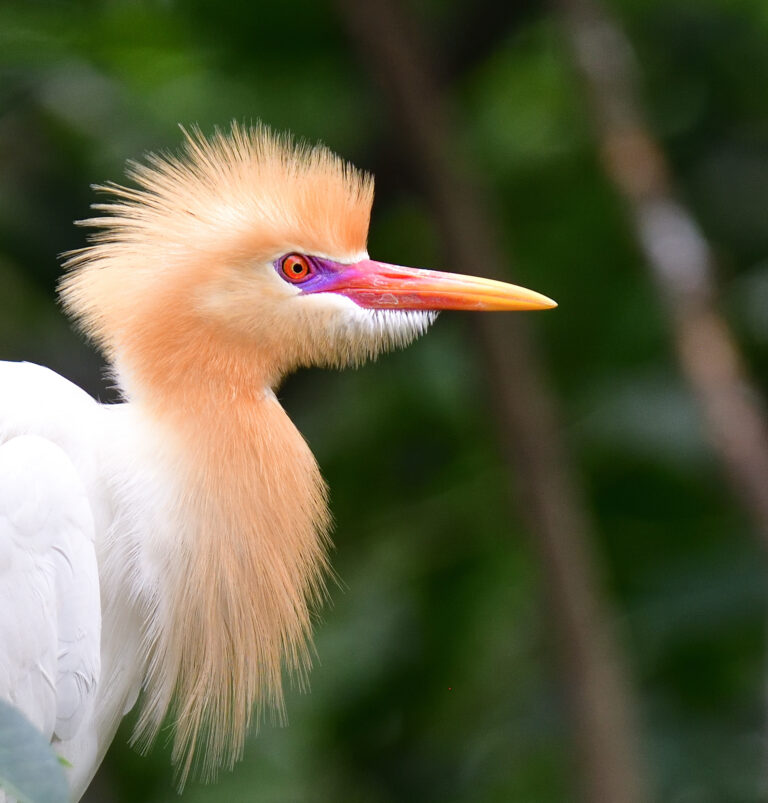
After dinner this evening we sing “happy birthday dear John”, before he blows out the candle on a makeshift ‘cake’ and we overwhelmingly nominate the Taiwan Barbet as ‘bird of the day’.
It’s raining heavily as we dash to another hotel along the street for breakfast, and the rain continues as we drive up to Yehliu Geopark, a promontory on the northeast coast, popular with visitors for its unusual geological formations including a pinnacle of rock shaped like an ancient queen’s head. Despite the windy wet weather here the butterflies are still flying, and we also see Black-eared Kite, Peregrine Falcon, Barn Swallow, Light-vented and Black Bulbuls, Blue Rock Thrush, Yellow-bellied Prinia and a lovely blue male Black-naped Monarch, plus Common Sandpiper on the rocky shore, but surprisingly, no seabirds!
After lunch in one of the few restaurants not resembling a pet shop, with all their aquaria brimming with fish, crabs, lobsters and squid, we spot a dark morph Pacific Reef Heron along the rocky shore on the way to a small nearby wetland where we find birds like Eastern Spot-billed Duck, Black-winged Stilt, Greenshank, Redshank, Grey-throated Martin, Plain and Yellow-bellied Prinias, Black Drongo, a Common Kingfisher despatching a small crab and three species of Starling lined up on the same wire; several White-shouldered and White-cheeked Starlings, plus one European, which is ‘bird of the day’ for our local guide Wu!
It’s raining again this morning as we drive southwest away from Taipei, but it ceases in time for our first stop of the day in an area of small rice fields not far from the airport where we get good views of Eastern Yellow Wagtail and Red Collared Dove, while an Upland Buzzard and both Eurasian and Japanese Sparrowhawks fly over. Other sightings in these fields include Intermediate Egret, Scaley-breasted Munia and both Zitting and Golden-headed Cisiticolas. Moving on a short way, more rice fields produce Wood Sandpiper, Yellow-bellied Prinia, the Philippine race of Brown Shrike and the black-backed lugens race of White Wagtail.


At 10am we reach Xucuogang on the west coast, where the sun comes out and the estuary and beach provide a waderfest which includes Redshank, Greenshank, Sanderling, Black-winged Stilt, Red-necked Stint, Terek and Sharp-tailed Sandpipers, Grey-tailed Tattler, Kentish and Pacific Golden Plovers, plus Turnstones and loads of Siberian Sandplovers in full breeding plumage on their way north. Other good birds here include Chinese Egret, Black-tailed Gull, a singing Oriental Skylark and the grey-backed ocularis race of White Wagtail. Continuing our journey south along the coast, in one small muddy field we enjoy an amazing find with a Sharp-tailed Sandpiper and two Long-toed Stints next to a vagrant Pectoral Sandpiper from North America which is a ‘lifer’ for Wu! While here, we also see Little Ringed Plover, Pacific Swallow and Chestnut-tailed Starling.
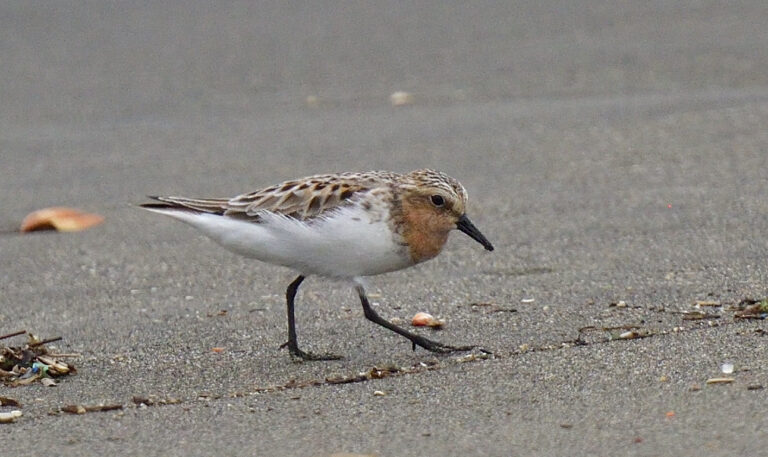
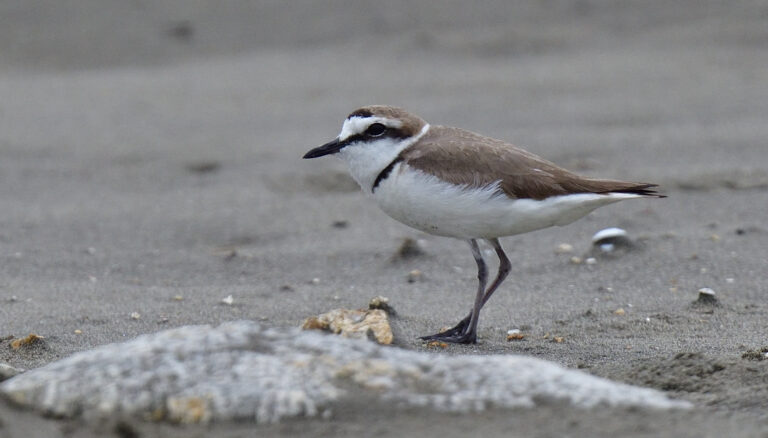
At 1.30pm, we make our last stop of the day at the Siangshan wetland, where the waderfest continues with more Black-winged Stilts, Greenshanks and Sharp-tailed Sandpipers, plus 29 handsome Marsh Sandpipers, a Black-tailed Godwit and a Greater Sandplover, making a total of 20 different waders today! After a long winding road up into the hills in pouring rain, journey’s end is at Lugu, where the road is crawling with toads and the air is full of large flying termites.
As it’s not raining this morning, we begin with a pre-breakfast stroll at 6.30am, but only get a few yards from the hotel as there is plenty to see, beginning with Swinhoe’s White-eye, Collared Finchbill and the endemic White-eared Sibia in the hotel gardens. From the road just outside the hotel gate we find two more Taiwanese endemics; Grey-cheeked Fulvetta and Steere’s Liocichla, along with Rufous-faced Warbler, Rufous-capped Babbler, Striated Swallow, another Crested Goshawk and some enormous spiders clinging to webs strung between the trees at eye level.
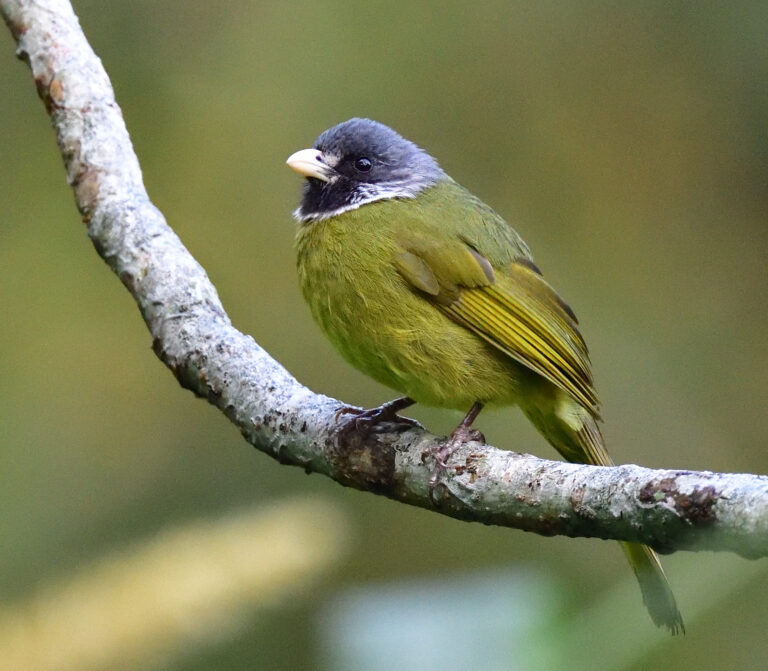
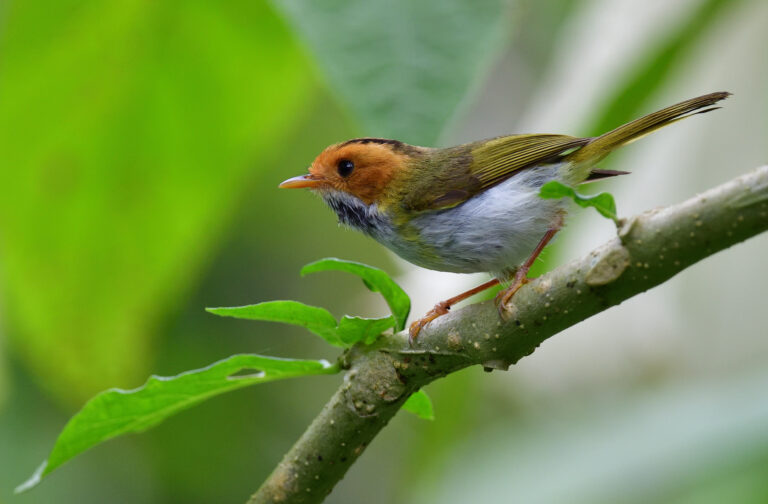

After breakfast, we visit the nearby Xitou Forest Recreation Area, at an altitude of about 3780 feet, with forest-clad slopes towering another 4400 feet above. Rufous-faced Warbler, Black-throated Tit and the endemic Taiwan Yuhina are obliging car park birds here. Exploring the tall forest, we also find White-bellied Green Pigeon, three island endemics; Taiwan Barwing, Taiwan Vivid Niltava and a posing Taiwan Whistling Thrush, with Pacific and House Swifts high above the forest. By mid-morning, the sound of thunder heralds the onset of rain which gets steadily heavier, but despite the wet conditions, we still manage to get fantastically close views of a male Snowy-browed Flycatcher and a very confiding male White-tailed Robin, before lunch under cover, with eye level views of White-eared Sibias and Steere’s Liocichlas feeding in the adjacent trees.
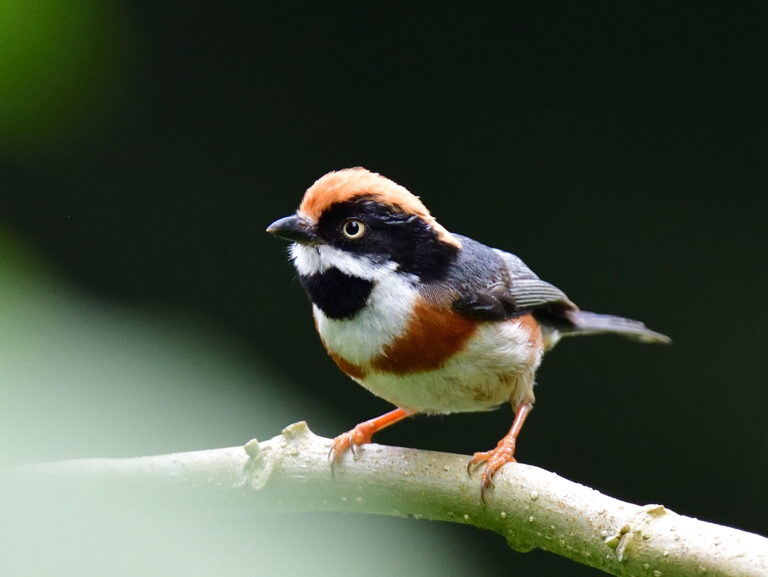
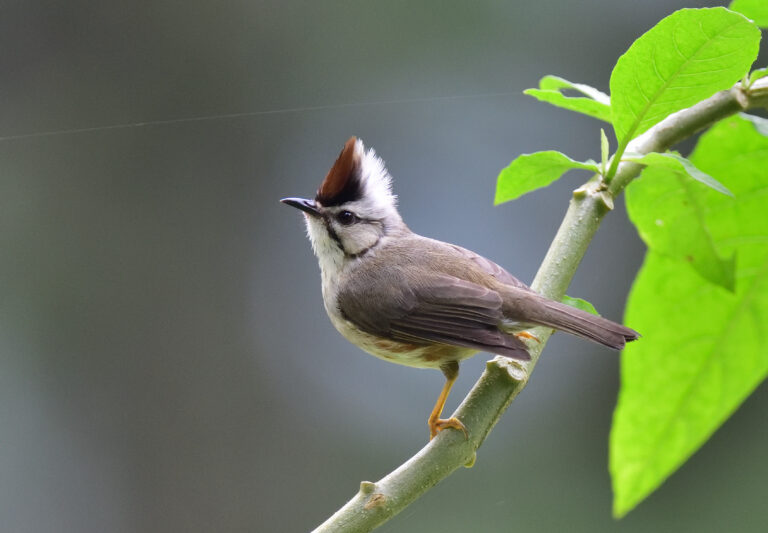
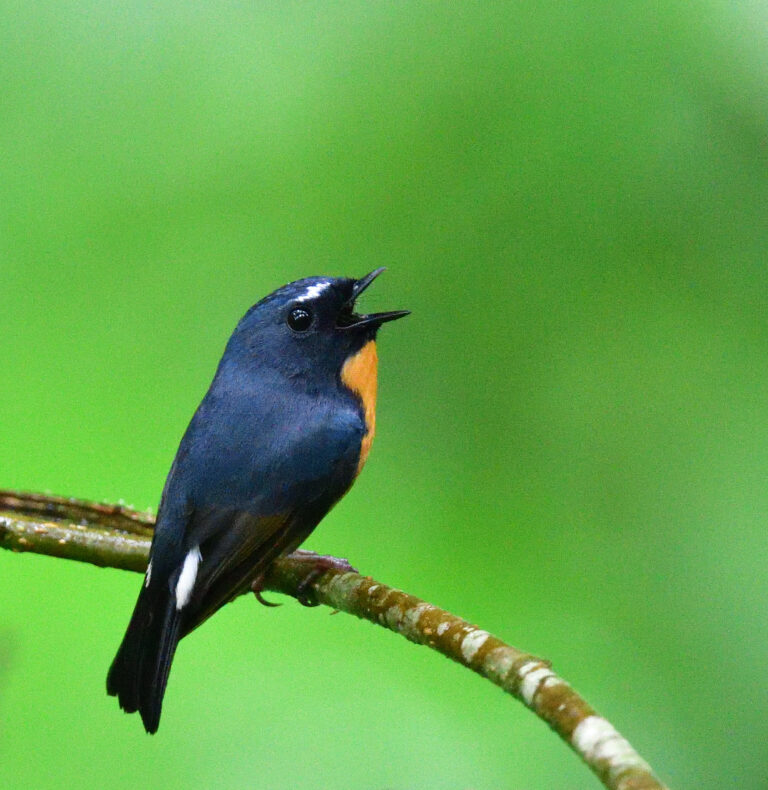
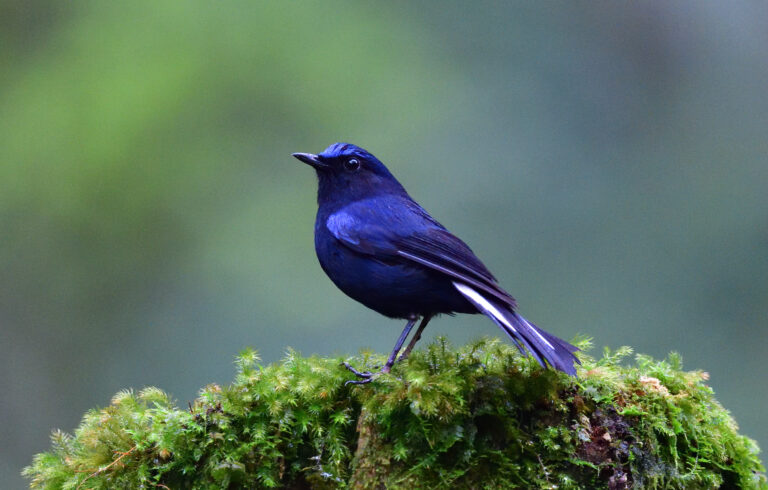
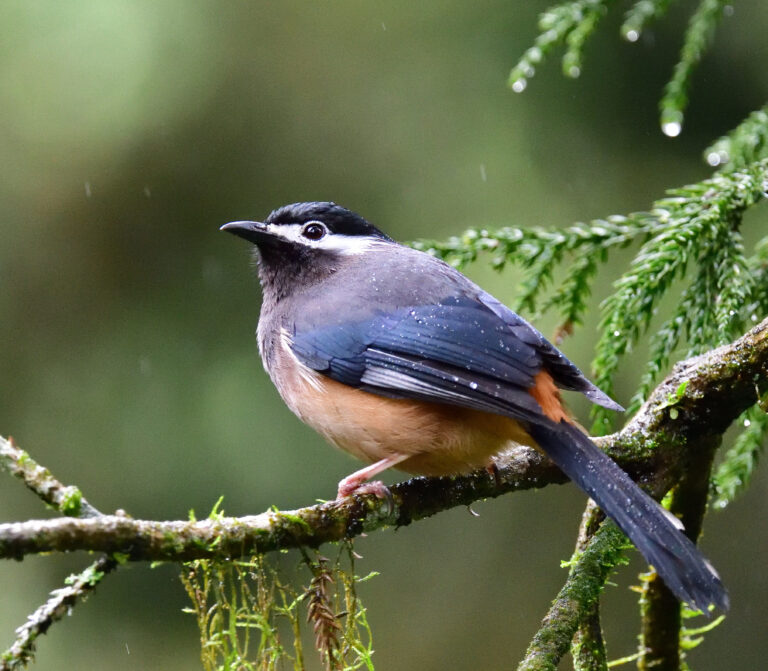
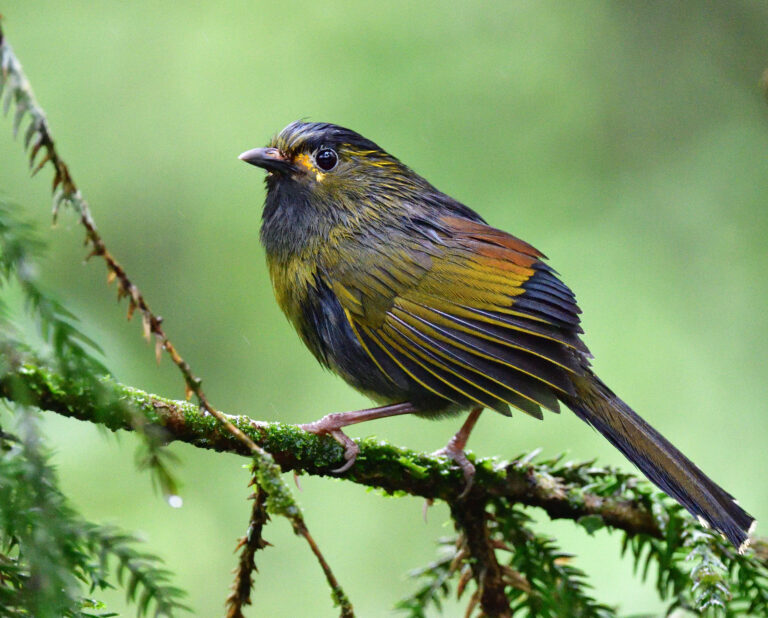
After lunch, it soon becomes apparent that further birding is futile in the now torrential downpour, so we throw in the towel and head back to the hotel for afternoon tea. By late afternoon, the rain has stopped so we have a short stroll and find ‘old friends’ like Oriental Turtle Dove, House Swift, Striated Swallow, Light-vented and Black Bulbuls, Collared Finchbill, Grey-cheeked Fulvetta and the Crested Goshawk.
After two earth tremours in the night, it’s business as usual, with a 6am pre-breakfast stroll from the hotel, though we find nothing new besides the ‘usual suspects’, plus Black-naped Monarch. After two nights at the very nice, quiet Ji Yai Guesthouse, we move on higher into the mountains via another tortuous winding road, with a couple of roadside stops, firstly for a Crested Serpent Eagle perched in a dead tree and then for Asian House Martins, Pacific Swifts and a Black Eagle all flying above the road beside a steep cliff. After an hour or so, the road ends at the oddly named Sun Link Sea Resort at an altitude of around 5250 feet, where we take a shuttle bus up to a popular beauty spot where the Song Long Rock waterfall cascades into a narrow river valley. Alighting from the bus, we are greeted by a vociferous Large-billed Crow and soon spot a pair of Plumbeous Water Redstarts on rocks in the river, with several more further upstream towards the cascade where we find another of our targets, the Little Forktail. Next, we follow the trail back to the resort alongside the river which is packed with fish and thousands of large black tadpoles. Along the trail, we also spot three Brown Dippers, more Taiwan Yuhinas and Steere’s Liocichlas, the local taivanus race of Eurasian Jay, another lovely little male Snowy-browed Fycatcher, and eventually, at remarkably close range, the super skulking, fast moving, mouse-like but tail-less Taiwan Cupwing! That’s now twelve endemic birds in just five days!
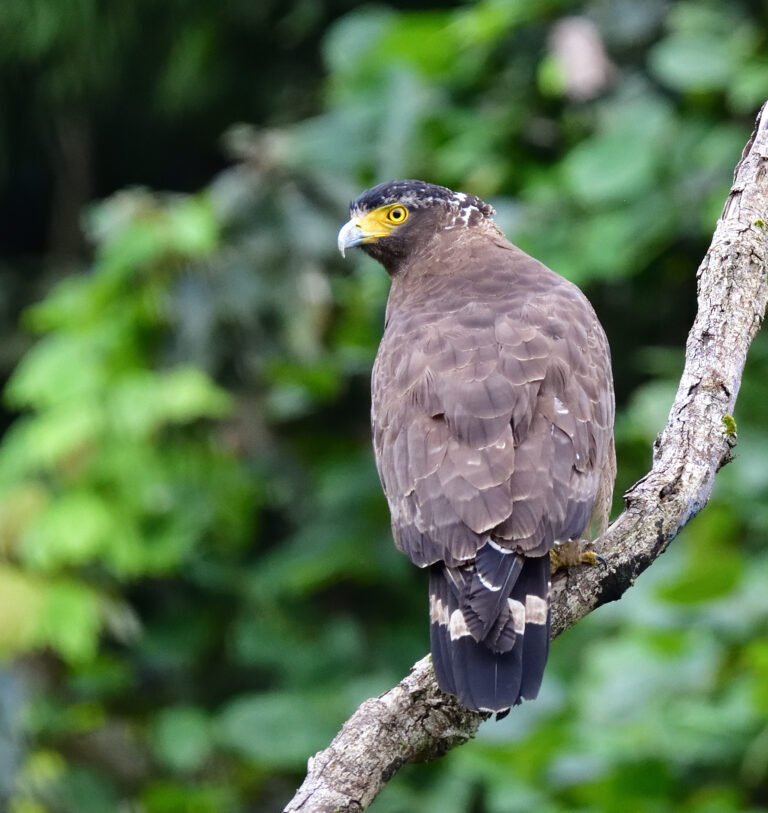

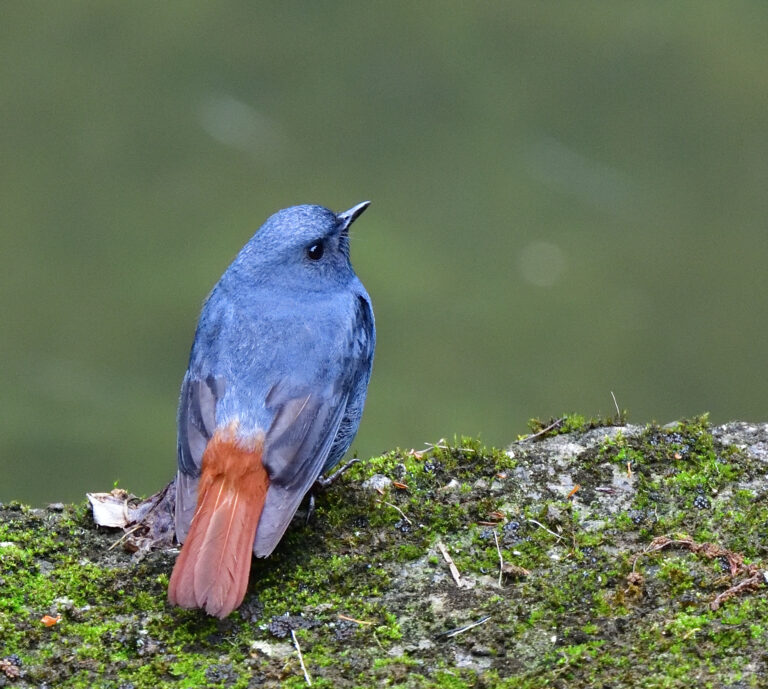
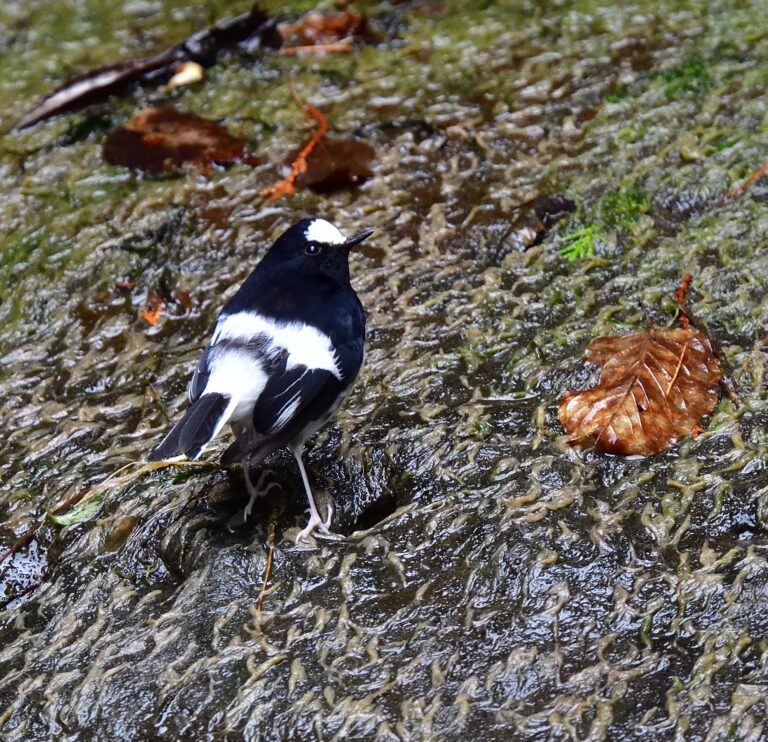
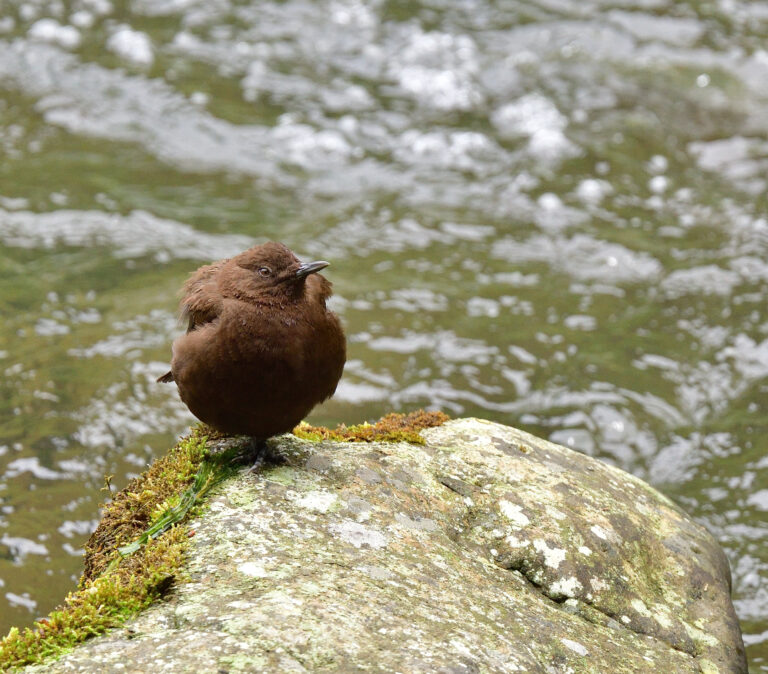
This morning, we set off on another 6am pre-breakfast stroll from our hotel and soon find a very vocal Brownish-flanked Bush-Warbler happily singing in the rain on an open perch just five yards away from us! We also enjoy equally close views of a male Fire-breasted Flowerpecker, while a Taiwan Hwamei calling nearby is far less obliging.
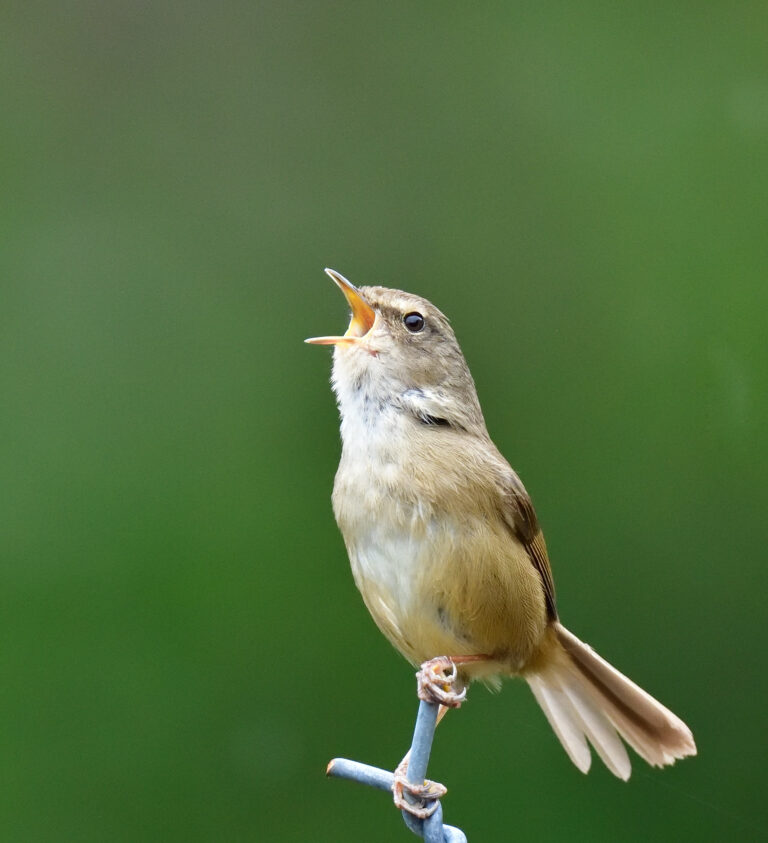
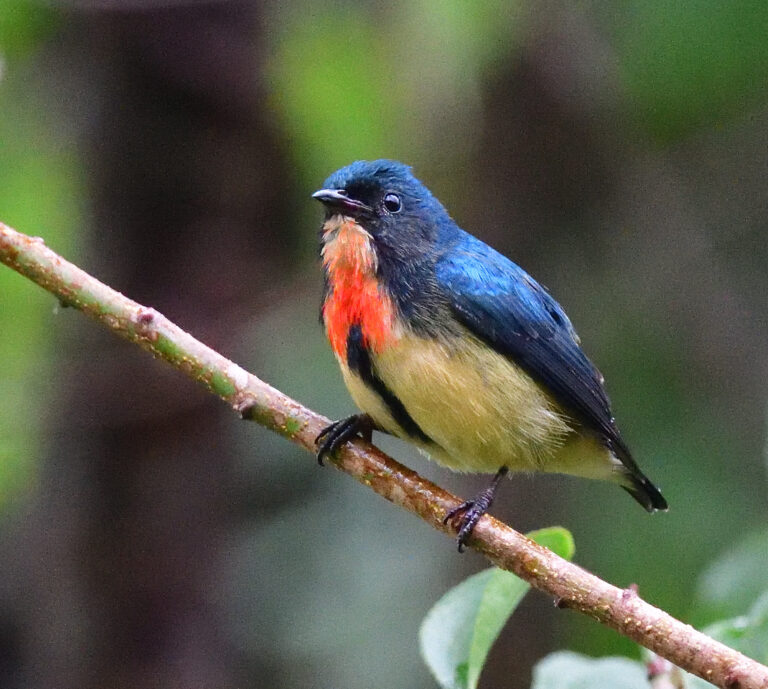
After breakfast, the main event of the day is a drive up to the Hehuensan pass at an elevation of 11227 feet, which is the highest road in Taiwan and the highest road east of the Himalayas! At the first stop along this road, we find three more birds endemic to Taiwan; White-whiskered Laughingthrush, Collared Bush-Robin and Taiwan Fulvetta, while a singing Taiwan Shortwing remains hidden. By now, it’s raining heavily again and the road over the pass is shrouded in mist, so we keep driving over the top and down the eastern slope until below the mist. Despite the awful wet conditions, we still manage to see a female Mikado Pheasant slink away into the undergrowth and then get incredible close views of a Yellowish-bellied Bush-Warbler with its beak wide open, but not moving, as it emits a strange high frequency almost electronic whining song, rather like the sound of a dentist’s drill! From the same spot we then pinpoint a Taiwan Bush-Warbler singing from within the dense undergrowth. With the rain still pouring we drive back towards the top of the pass for a welcome warm drink, with several Taiwan Bullfinches and Rosefinches feeding on the grassy verge outside the café, making a tally of 7 new Taiwan endemics in one morning! Moving on to the very top of the pass, with rain still pouring and low cloud swirling, our next target, the local fennelli race of Alpine Accentor, is easy to find as it’s feeding on the car park, next to the vehicle! After a very wet but productive morning, we decide to descend to a warmer elevation for lunch in a local restaurant.
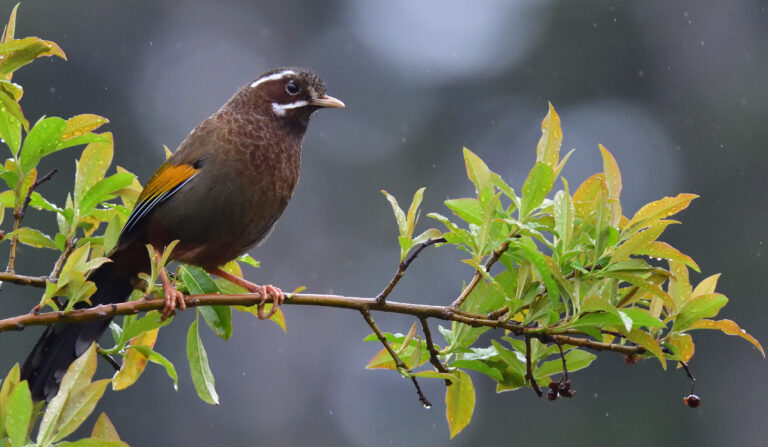

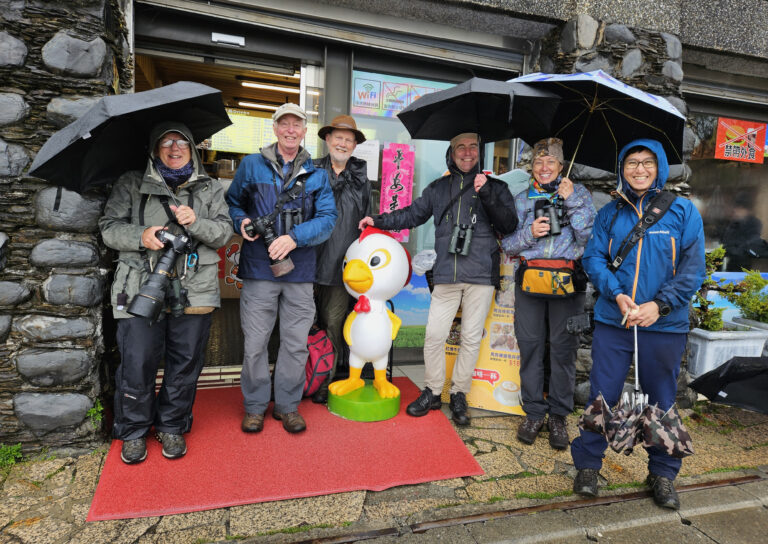
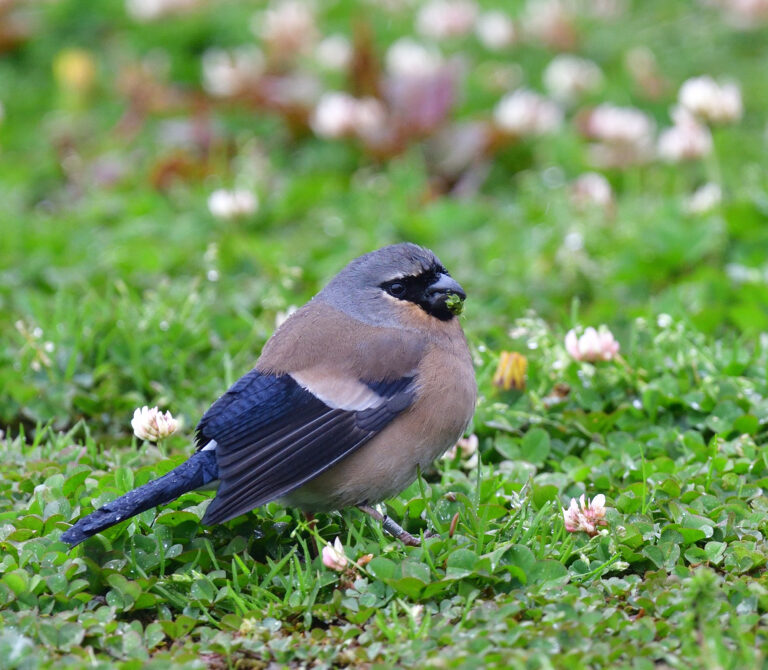
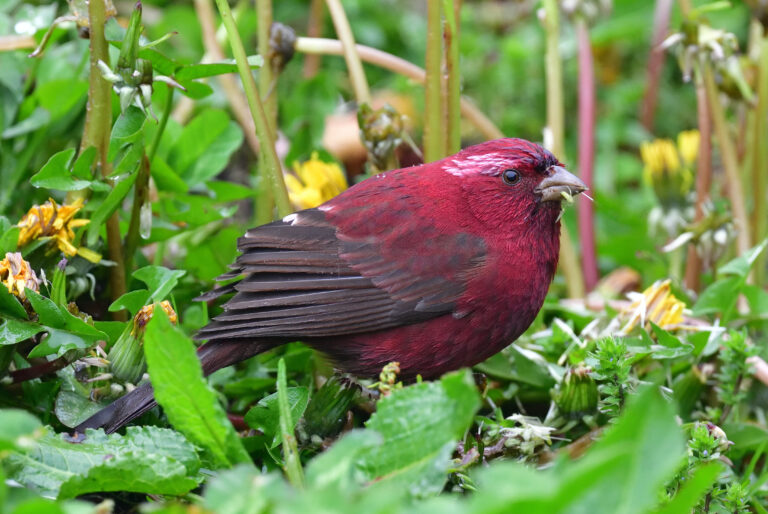
On the drive to our next site, two Taiwan Bamboo Partridges cross the road ahead of the vehicle on the way to a monastery near Puli where our main target is Maroon Oriole. By the time we arrive at the monastery, the weather has improved markedly with warm sunshine at last, and we shed several layers! Sightings here include Malayan Night Heron, Oriental Honey Buzzard, White-rumped Shama, Grey Treepie, Taiwan Blue Magpie, White-rumped Munia, and finally, a pair of smart Maroon Orioles. From here it’s a short drive to the Peikong Creek Resort, beside the Beigang River, and as we meet for dinner around dusk at 6.45pm, we grab the scopes from the vehicle to view a Savanna Nightjar calling from a nearby rooftop!
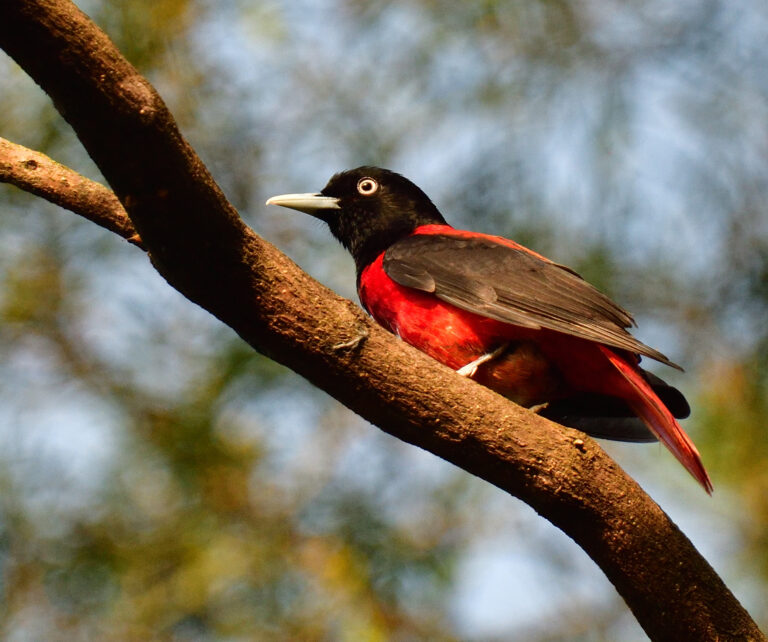
Hooray! It’s a beautiful sunny morning for our 6.30am stroll around the hotel grounds where we find birds like Spotted Dove, Brown-throated Martin, Taiwan Barbet, Hwamei and Scimitar Babbler, Grey Treepie, Light-vented and Black Bulbuls, Black Drongo, Black-naped Monarch, Arctic Warbler and White-rumped Munia, plus Grey-capped Pygmy Woodpecker and White-bellied Erpornis which are both new for the trip, and all this in just an hour!

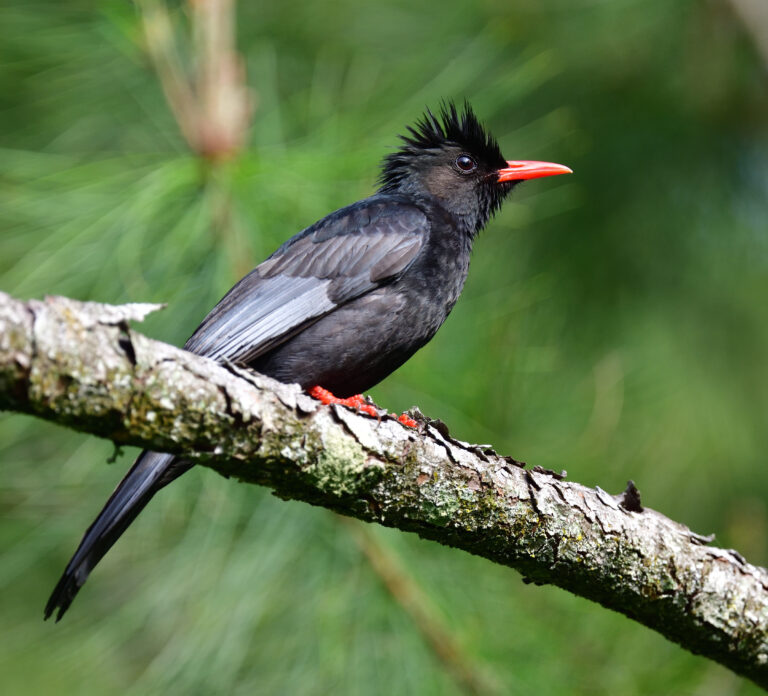
After breakfast, we have to switch to plan B, as the plan to visit the nearby Huisun Forest Station is no longer an option as the road is closed by a landslide. Instead, we make a longer drive to the BasianShan Forest Recreation Area, where we find Crested Serpent Eagle and Crested Goshawk circling over the trees near the entrance. Other sightings here include several Grey-chinned Minivets, another Brown Dipper and another Grey-capped Pygmy Woodpecker, as well as nest-building Pacific Swallows, and Chestnut-bellied Tit, which is new for the trip and our twenty-first island endemic.
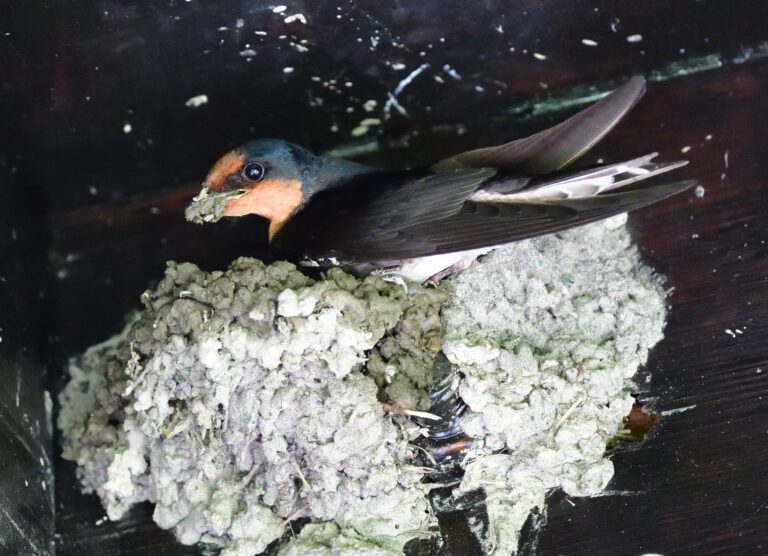
After lunch in nearby Guguan, we return to the hotel for an afternoon break to enjoy the swimming pool and resume the birding at 5pm with a stroll in the local area where new birds for the day include Red Collared Dove, Striated Swallow, Javan Myna and another leucopsis White Wagtail. Overall, this was a quiet day by recent standards, probably as it was so warm and sunny.
It’s another warm sunny morning, and as the landslide has been cleared, we begin with a visit to Huisun Forest Station, a beautiful verdant forest where we begin with a group of Taiwan Blue Magpies, as well as a Grey Treepie, followed by a Malayan Night Heron perched in a tree and booming like a Bittern! In the same area, a couple of Taiwan Bamboo Partridges cross the path ahead of us, but a Dusky Fulvetta calling nearby is far too secretive for anything more than a brief glimpse, while a group of Grey-cheeked Fulvettas are far more obliging. As the morning warms up, the cicadas become deafening, and a variety of exotic butterflies far outnumber the birds. Finally, we find a family group of sunbathing Formosan Rock Macaques and then start the long winding drive up to Dasyueshan Forest Recreation Area, where a roadside stop produces another group of Crested Tit-like Taiwan Yuhinas but then we hear thunder, and it begins to rain yet again. As we hurry back to the vehicle, we notice a male Swinhoe’s Pheasant at the edge of the parking area, just before it drops down the slope and away into the forest. By now, the rain is torrential again, turning to hail as we drive to our next base further up the road, and we have to stop to remove a fallen tree blocking the road along the way. The rain continues for the rest of the afternoon and into the evening, but we venture out briefly after dinner to look for nocturnal flying squirrels, which don’t seem to like wet weather, although we do find a large Taiwan Common Toad and a green Taipei Tree Frog.

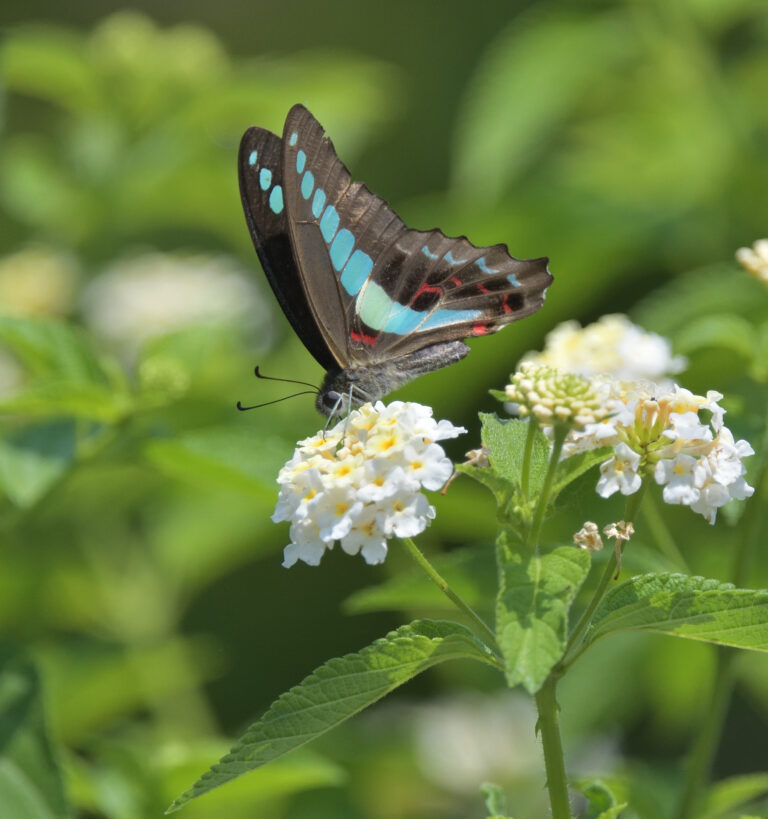

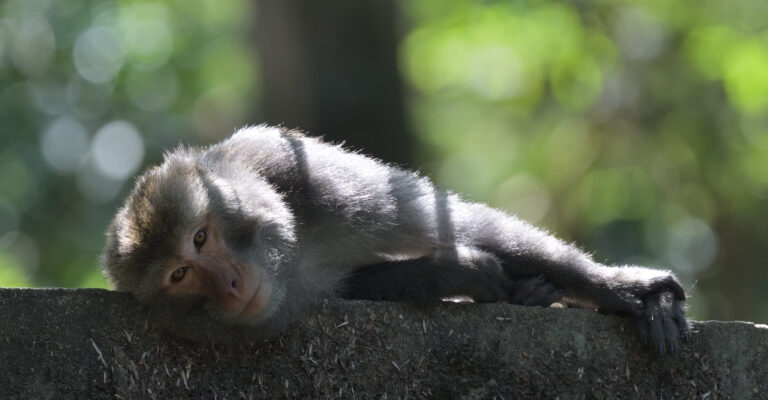
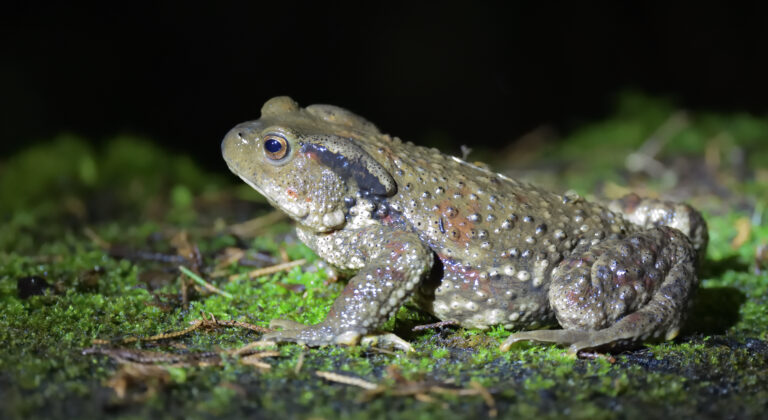
It’s still raining this morning, but we venture out anyway for a pre-breakfast stroll at 6am and find a group of endemic Rufous-crowned Laughingthrushes feeding on wild cherries not far from the lodge. Also near the lodge, we spot a curious White-faced Flying Squirrel peering down at us from a hole in an old tree trunk. Next, we find another Taiwan Vivid Niltava and a Taiwan Whistling Thrush, which must like the same habitat as we saw both of these birds within a few minutes on a previous day. Moving on we find a male Fire-breasted Flowerpecker, more Taiwan Yuhinas and a Black-throated Tit.
During breakfast, a bright light appears up in the sky, but it isn’t long before it’s eclipsed by gathering clouds. Undaunted, we drive to the end of the road at an altitude of 8399 feet and set off on a stroll into the forest, past one of numerous public conveniences and soon find Oriental Cuckoo and a superb male Mikado Pheasant feeding behind the toilet block. Moving on, we encounter the bizarre song of another Yellowish-bellied Bush-Warbler which briefly shows really well in its long grass habitat. Further sightings in this superb mixed forest include Black-throated and Green-backed Tits, the local ptilosus race of Coal Tit with a remarkable spikey crest, a female Taiwan Bush-Robin, a Reeve’s Muntjac and finally, back on the car park, the endemic Firecrest-like Flamecrest in the scope, while sitting motionless at the very top of a tall tree!
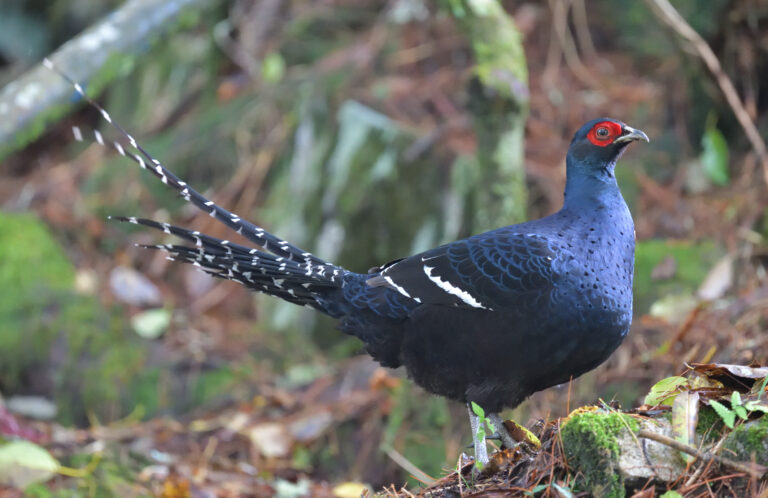
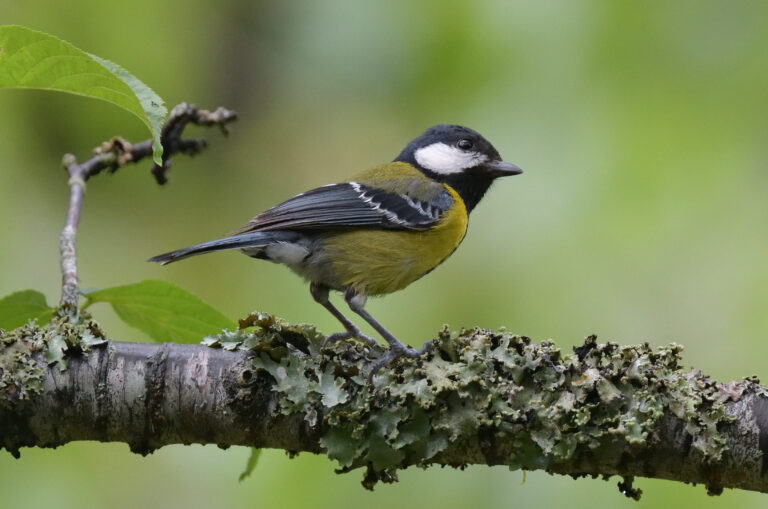
From here we decide to drive down the road in search of lower elevation birds and at the next car park we find a flamboyant male Swinhoe’s Pheasant, with an iridescent blue body, red face and an extravagantly long broad white tail, foraging as bold as brass behind another toilet block! These ubiquitous toilets are really useful places to hang around! This particular one has an open-air design which doubles as a bird hide, so that gents can ‘hang out’ and watch birds at the same time! From here, we drive further down the road and find the endemic Yellow Tit as well as another group of Rufous-crowned Laughingthrushes and a male White-backed Woodpecker which is new for the trip. From a vantage point over the forest, we even find a pair of finely marked Taiwan Partridges on the forest floor, making a total of 15 endemics for the day and 28 for the trip! By now the weather is atrocious, with heavy rain and low cloud reducing the visibility to just a few yards and so we return to the lodge for an ‘early bath’.
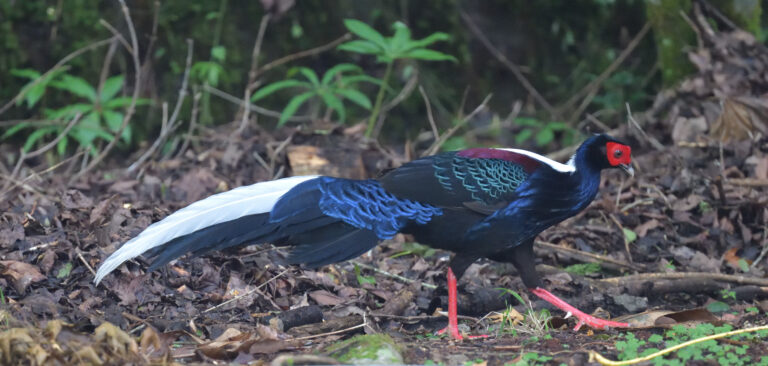
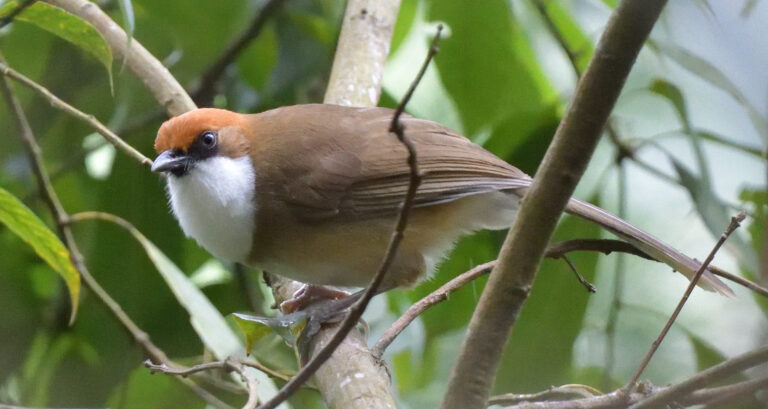
After a very wet night, it has stopped raining by 6am in time for our pre-breakfast stroll around the lodge, but within a few minutes, it’s raining again! Nevertheless, we still find Pallas’s and Maritime Striped Squirrels feeding on cherries near the lodge, as well as spotting a fly by Ashy Wood Pigeon, followed by Eurasian Nutcracker and another male Swinhoe’s Pheasant strutting around the edge of the visitor centre car park.
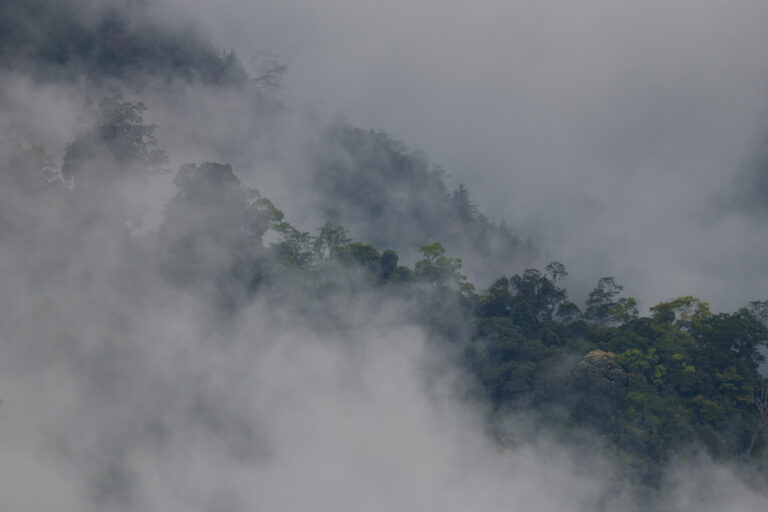

After breakfast, we drive back to the end of the road and get close views of a Flamecrest feeding in young conifers at eye level, before leaving the car park. Moving on, we encounter several White-whiskered Laughingthrushes foraging on the ground to within a few feet of us, without batting an eyelid! By now, the swirling mist is not conducive to birding, so we return to the vehicle and drive down to below the cloud base at the very convenient ‘super loo’, where sightings include confiding birds like Green-backed Tit, Eurasian Jay and Taiwan Whistling Thrush, plus Taiwan Yuhinas and Barwings feeding on cherries right outside the loo block. Strolling along a nearby wide level trail, Wu hears a rare Taiwan Thrush singing below the trail, which we eventually pinpoint on a bare branch. On the way back along the trail, we find three Taiwan Partridges scratching away at the soil next to the trail, and back at the ‘super loo’ car park we eventually get good views of the shy Rusty Laughingthrush, which we narrowly missed yesterday. Next, we drive lower still to a bridge across a wide gorge, where Asian House Martins breed along with Rufous-faced Warblers and Grey-chinned Minivets. Remarkably, Wu hears another Taiwan Thrush singing here which we eventually pinpoint in the scope, perched on the end of a mossy branch high up on the wooded slope. Still needing good views of Taiwan Yellow Tit, we drive a short way further until Wu hears the tit from the van window calling above the road, so we stop and pile out for good views of this endemic little bird with a lovely white-fringed black crest. Returning to the ‘super loo’ for another walk along the ‘Thrush trail’, we find a group of Rufous-crowned Laughingthrushes, making all three endemic laughingthrushes in one day!
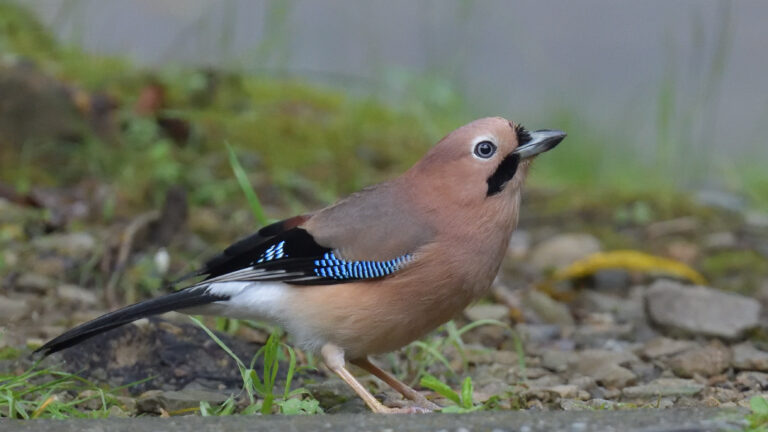
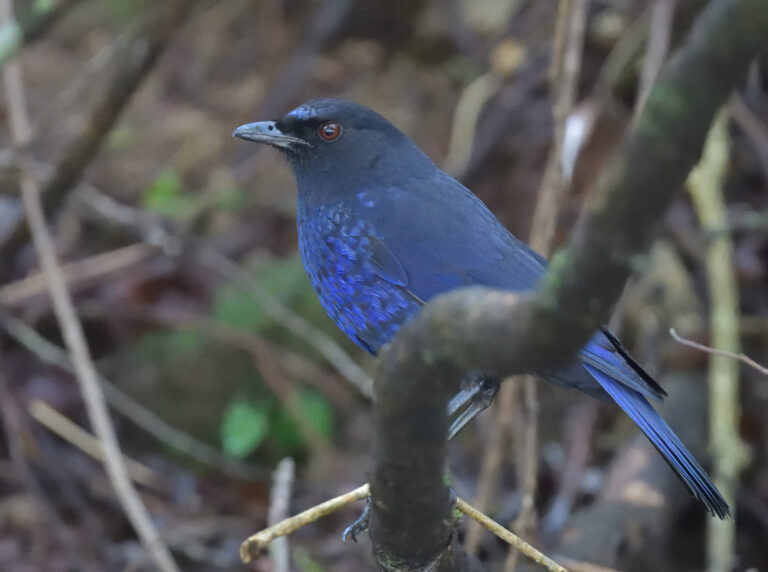
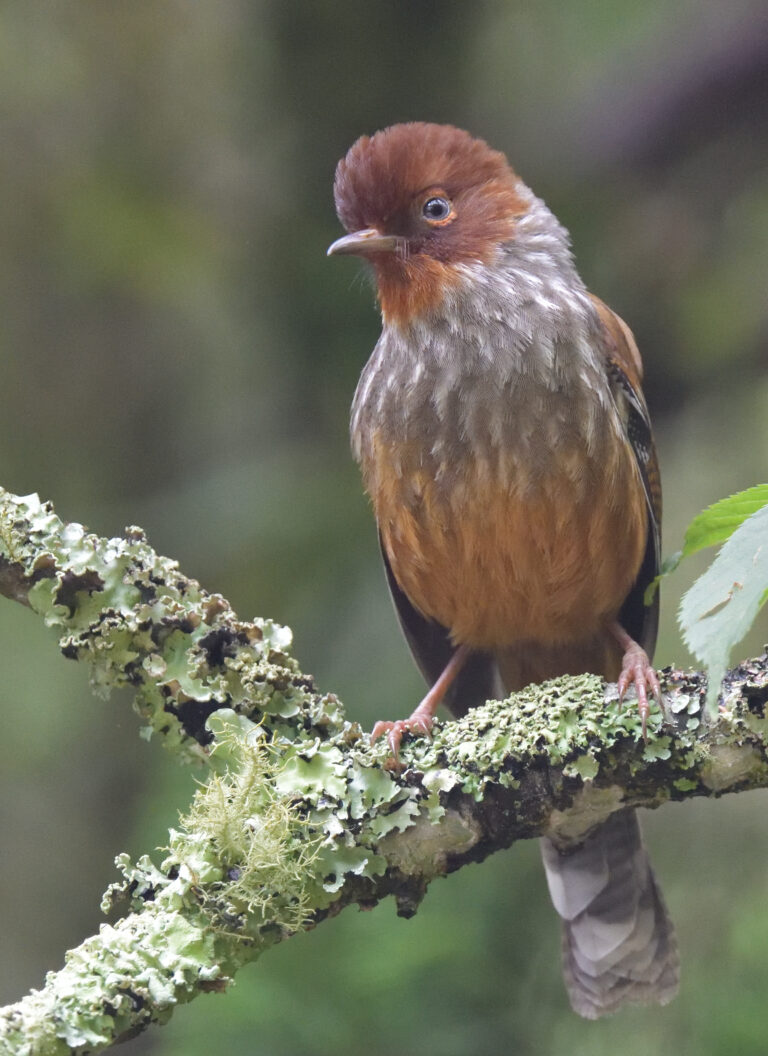
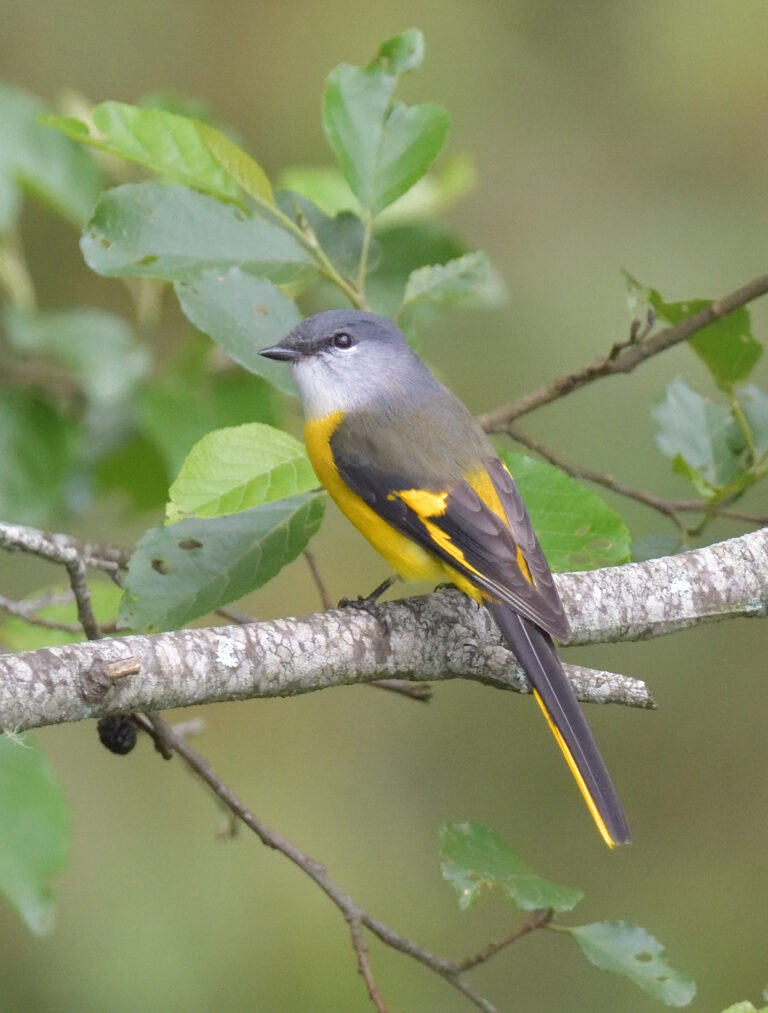
After dinner, we head out for a short night walk and find an impressively large White-faced Flying Squirrel feeding on cherries in the trees near the lodge, while a Mountain Scops Owl calling in the distance is too far away to locate, even with the aid of a thermal imaging camera. Back at the lodge, we notice stars in a clear sky!
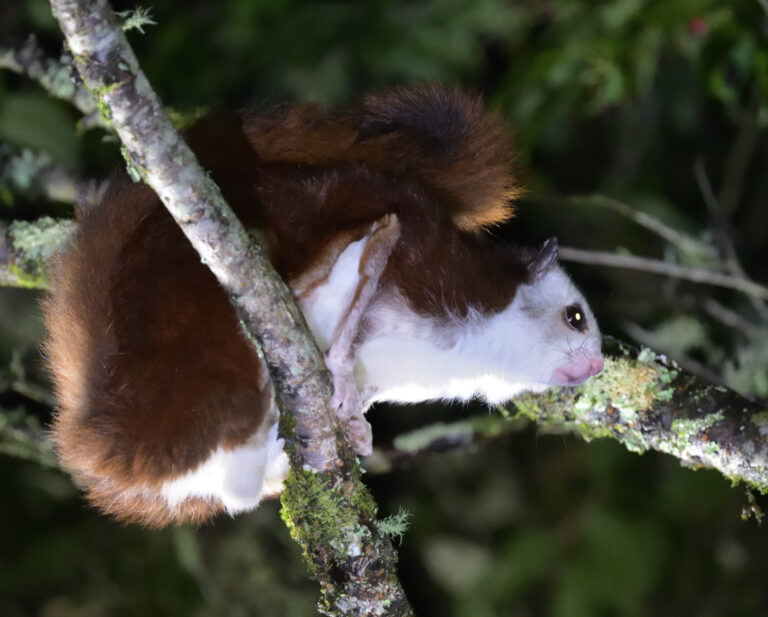
At last, it’s dry and sunny for our 6am pre-breakfast stroll, and we only need half as many layers as for the previous two dreary days. Along the way, we spot three Eurasian Jays and hear the omnipresent calls of White-eared Sibias, and then, Grey-headed Woodpecker, which we eventually find clinging to a big old tree trunk. We also find Black-throated Tit, plenty of Taiwan Yuhinas, a couple of circling Silver-backed Needletails, which are new for the trip, and finally, an unusually showy Rufous-capped Babbler.
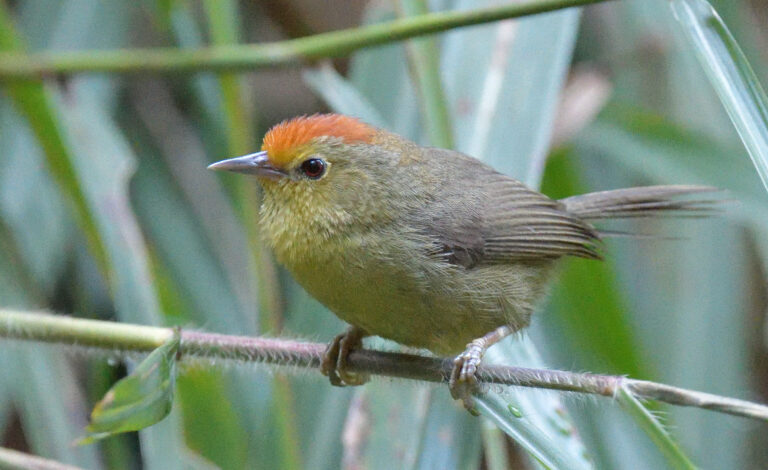
After breakfast, we drive back to the end of the road and follow a new trail which winds gently through the forest of towering old coniferous trees with an understorey of bamboo, where the first find is a male Taiwan Bush-Robin, followed by fabulous close views of a Taiwan Fulvetta, and then a female Taiwan Bush-Robin and another spikey-headed Coal Tit. Next, a singing Taiwan Bush-Warbler puts on a great show for us with some really close open views of a usually skulking bird, followed by another female Taiwan Bush-Robin from the same spot. Further on, we hear Oriental Cuckoo and watch three of them chasing each other around in the treetops. Our final sighting on this lovely productive walk is a nice little Ferruginous Flycatcher which is another new bird for the trip.
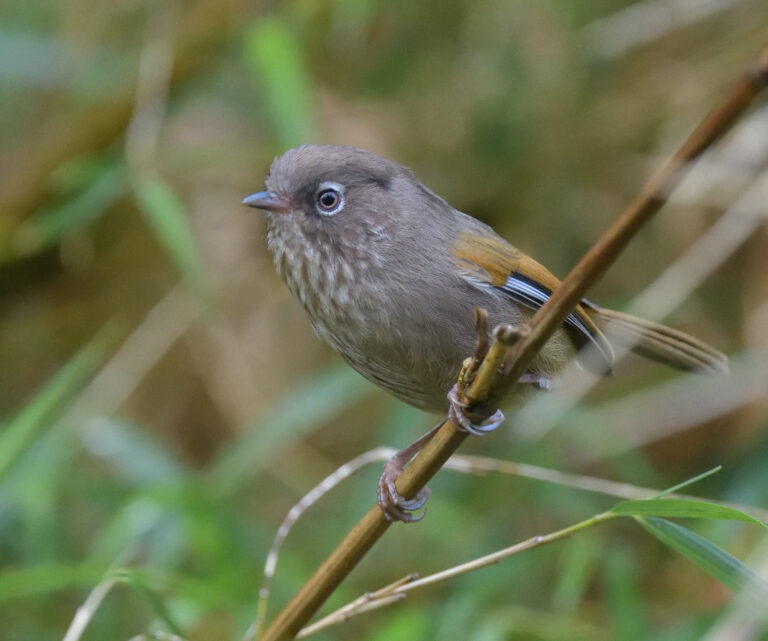
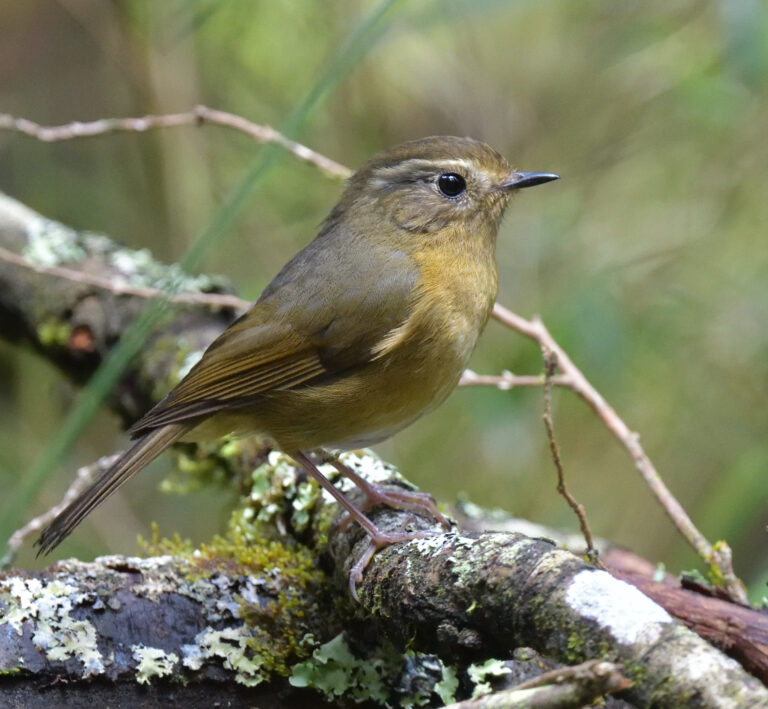
From here at the very top of the road, we now drive slowly downhill back to ‘civilisation’, with lunch in a restaurant, followed by a couple of short walks in nice habitats alongside small streams, where sightings include a pair of Plumbeous Water Redstarts, plus Brown Dipper, Spotted Dove, Grey Wagtail, Common Kingfisher, Collared Finchbill, Grey-capped Pygmy Woodpecker, a Bronzed Drongo mobbing a Crested Serpent Eagle and a singing Taiwan Hwamei. Journey’s end is the Yunlin Gukeng Da-Hu Villa in Douli, and by now it’s so warm, we only need a tee shirt again. After dark, a Savanna Nightjar calls throughout the night from a rooftop right outside the guesthouse.
A roadside electronic thermometer sign says 24°C, as we set off extra early at 5.15am to meet up with a more local guide to help us find the Fairy Pitta which is a local speciality in the forest around Linnei. The guide leads us on his scooter to a car park near an ornate temple where we set off on foot at 6.10am along the Lungkuomai Forest Trail, and by 6.35am, we have a Fairy Pitta, calling from a high branch not far from the trail. Wow, what luck! Along the same trail, we also find Dusky Fulvetta, Emerald Dove, Taiwan Scimitar Babbler and White-rumped Shama. Back at the car park, we follow the guide to a second site, with Eastern Buzzard and Crested Serpent Eagle circling with a ‘kettle’ of Chinese Sparrowhawks on migration north. From here, the guide leads us along a narrow path into a dense forest, crawling with millions of tiny ants. At the end of the short path is a very ramshackle ‘hide’ overlooking a small pool and a tree stump baited with something resembling mealworms, which are quickly gobbled up by a pair of White-rumped Shamas. After a short wait, a Fairy Pitta enters stage left and slowly but purposefully makes its way towards the stump. Cameras whirr frantically once the squat-shaped pitta, with short tail and long legs, alights on the stump, showing off its chestnut crown, black eye mask, white throat, red underbelly and bright green back with gleaming turquoise lesser wing coverts. What a spectacular bird! No question about bird of the day today.
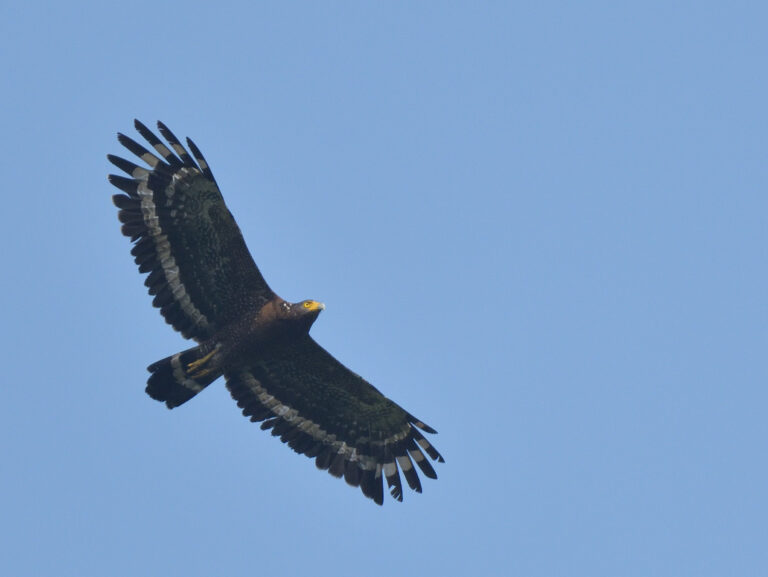
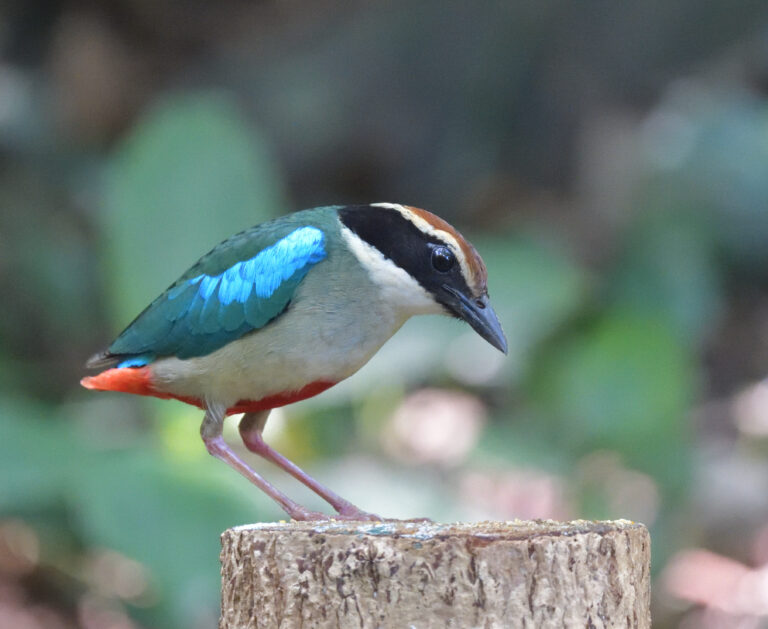
Next, we explore the local area, beginning with a site recommended by Wu for Crested Myna and within ten seconds of alighting from the vehicle, there it is, sitting on the top of a pole! Moving on, we search a damp field of Tarot for Greater Painted Snipe and remarkably, sharp-eyed Anny finds a pair of these well camouflaged waders hunkered down in the vegetation! In the scope, their large brown eyes for crepuscular feeding are reminiscent of those of our own Brown Hare. We also find Little Ringed Plover, Wood Sandpiper, Grey-throated Martin and Plain Prinia here.
After lunch at the Fairy Pitta Café, we walk along a small river to the very ornately decorated Tiensheng (Heavenly) Temple, spotting Taiwan Barbet, Red Collared Dove, Pacific Swallow and Yellow-bellied Prinia along the way. Last stop of the day is in search of White-browed Laughingthrush and eventually we find a couple along with another leucopsis White Wagtail.
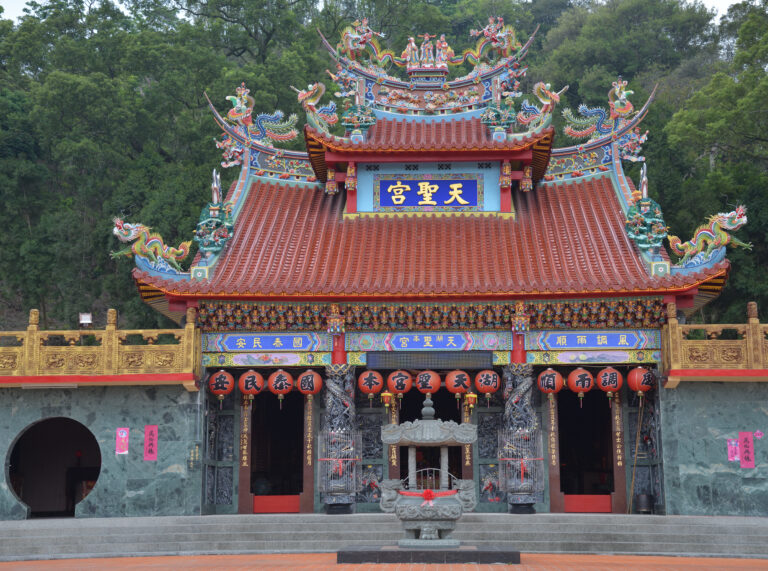

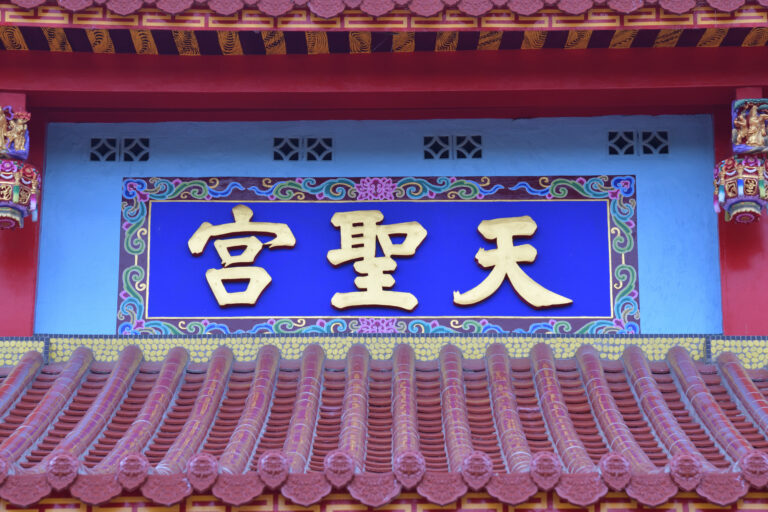
After dinner in a local restaurant, we finish the day list with a Savanna Nightjar calling from a roof top next to the guesthouse.
It’s another dry morning for our 6.30am pre-breakfast stroll around the guesthouse grounds where we find many of the ‘usual suspects’ like Black-crowned and Malayan Night Herons, Red Collared Dove, Striped Swallow, Grey-capped Pygmy Woodpecker, Common and Javan Mynas, Plain and Yellow-bellied Prinias, Brown Shrike, Grey Treepie, Swinhoe’s White-eye, Collared Finchbill and Black Bulbul, plus Light-vented Bulbuls galore.
After breakfast, we head for the southwest coastal plain, with a stop en route to ‘twitch’ for a recently seen Little Curlew, which has a very restricted range, breeding in northwest Siberia and wintering in northern Australia. Incredibly, thanks to the knowledge of our local guide Wu, we find two of these scarce waders flying over an area of harvested sugar cane, where we also add Oriental Pratincole and Long-tailed Shrike to the trip list. Just as we find these birds, the wind gets up, thunder sounds and it begins to rain yet again, though this time, not for long. By the time we reach an area of clam-rearing lagoons near Taishi, the clouds have cleared and the sun feels very warm. The lagoons here provide a wealth of waterbirds, with loads of Siberian Sandplovers and Curlew Sandpipers, coming into their brick-red breeding plumage, plus more Redshank, Greenshank, Turnstone, Black-tailed Godwit, Black-necked Stilts and a few Sharp-tailed Sandpipers. Among the throng, we find new birds like Whiskered and Little Terns, Avocet and Red Knot in breeding plumage, plus one Great Knot and a Broad-billed Sandpiper.
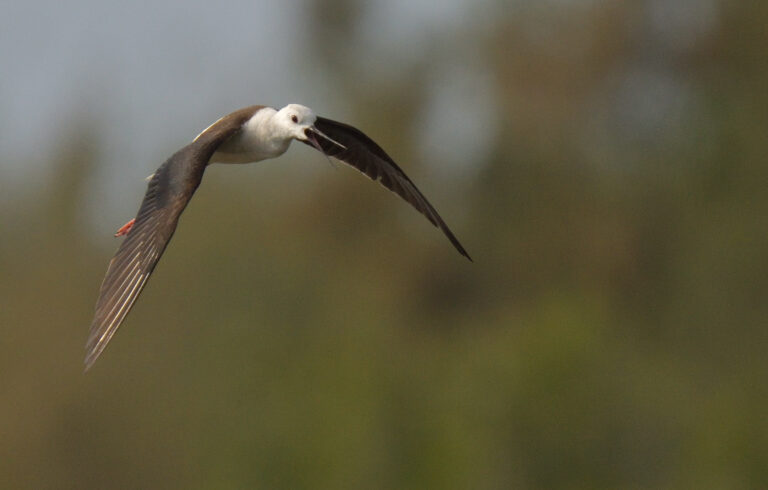
After lunch in a very lively seafood restaurant among the lagoons, we emerge to see a Black-shouldered Kite perched on a wire just along the road. Moving on, we make an emergency stop for a Lesser Coucal at the roadside in an area of sugar cane, where we also find several Oriental Skylarks and an Eastern Yellow Wagtail. Next stop is at a very well laid out centre where endemic Formosan Golden Bats roost, and we scope one of these tiny bats, only two inches long, clinging to the underside of the leaf of a Lychee tree. From here, we move on to the Hukou wetlands where we get views of many Little Grebes, three Black-shouldered Kites and several Yellow Bitterns perched in reeds and also in flight over a lake. Another unusual sighting here is a rare Indian Cuckoo as it flies above us, calling as it goes. Journey’s end is the Ocean Hotel on the waterfront of the harbour in the fishing port of Budai. This evening, we have a tour of the fish market, displaying a wide diversity of fish, molluscs and crustaceans before dinner in a seafood restaurant within the market.
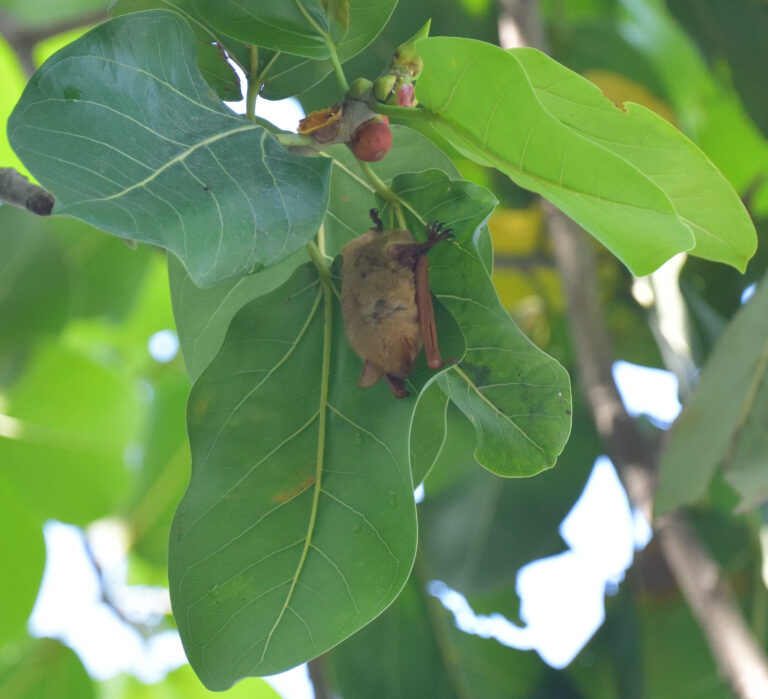
It’s very warm and sunny for our last full day in the field, exploring the wetlands around the Budai area, where the first stop by a large lagoon produces plenty of Great Egrets, some Little Terns and Avocets, a Yellow Bittern and a tschutschensis Eastern Yellow Wagtail. At the next large lagoon, we find a very large concentration of Great Egrets, plus Little Egrets, Grey Herons and Black-crowned Night Herons, possibly the largest concentration I have ever seen, and amongst them all, we find a dozen or so rare Black-faced Spoonbills, which breed along the Korean Peninsula coast, feeding with one Eurasian Spoonbill, plus Pacific Golden Plovers, Caspian and Whiskered Terns, a White-winged Tern and a superb male Cinnamon Bittern at fairly close range, making around 34 species by 9am! At the next two stops, we count a group of 94 Caspian Terns, and then three Bar-tailed Godwits amongst a resting flock of probably a thousand Pacific Golden Plovers. Our fourth stop produces more of the same species, including another couple of dozen Black-faced Spoonbills, as well as several Eurasian Wigeon, Red-necked Stints and Sharp-tailed Sandpipers, and a couple more White-winged Terns amongst the Caspian, Whiskered and Little Terns, plus one Spotted Redshank and best of all, two rare Asian Dowitchers on their way north from either Australia or Indonesia to their breeding grounds in central Asia; one still in grey non-breeding plumage and the other in rusty-red breeding plumage.
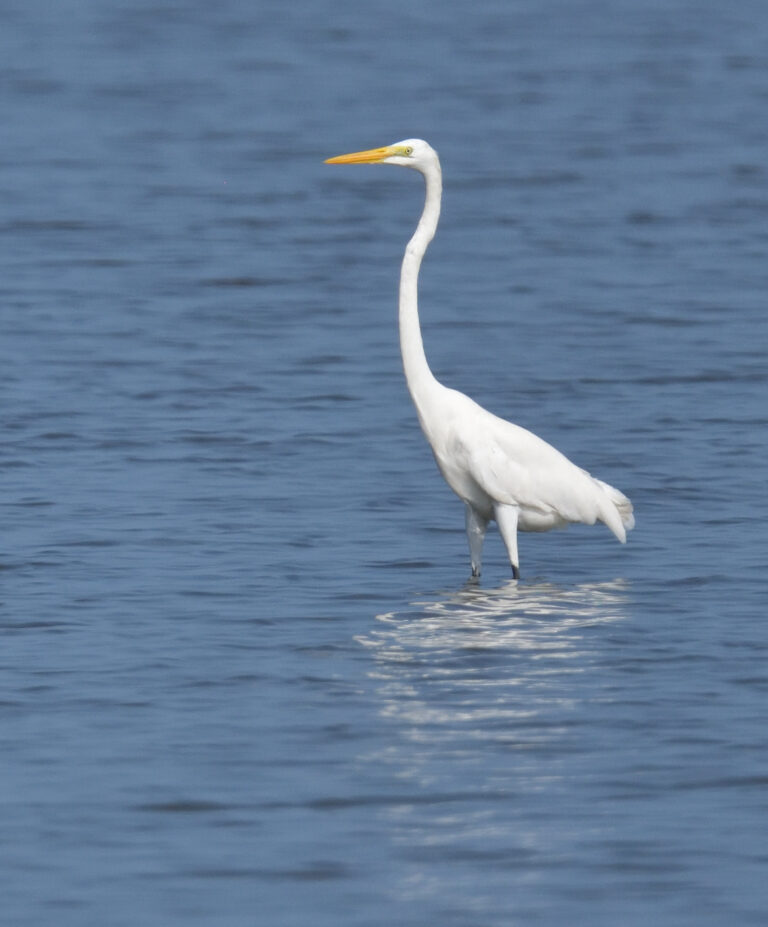
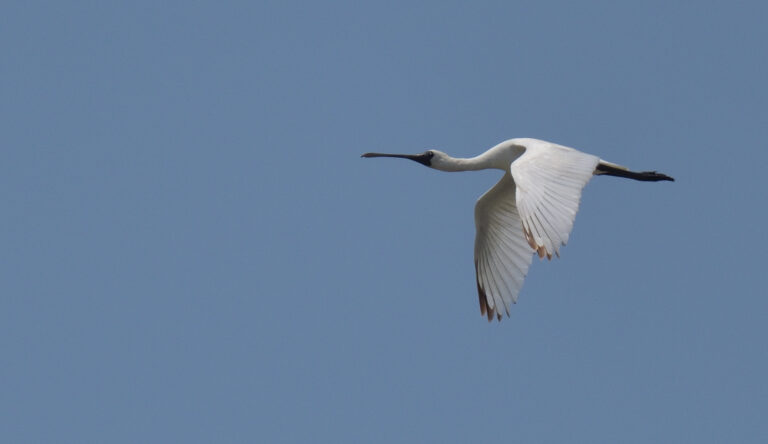
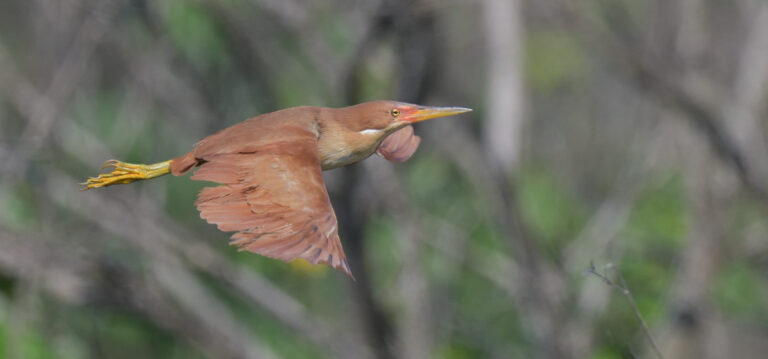
Moving on, we have lunch at the extensive and ornately decorated Nankunshen Temple and then visit the Bajhang Estuary on the coast of the warm Taiwan Strait. Along the estuary shore we find several Grey-tailed Tattlers, three Great Knot and both Pacific Golden and Grey Plovers, and in the mouth of the estuary, we also find yellow-billed Great Crested Terns and one black-billed longipennis Common Tern.
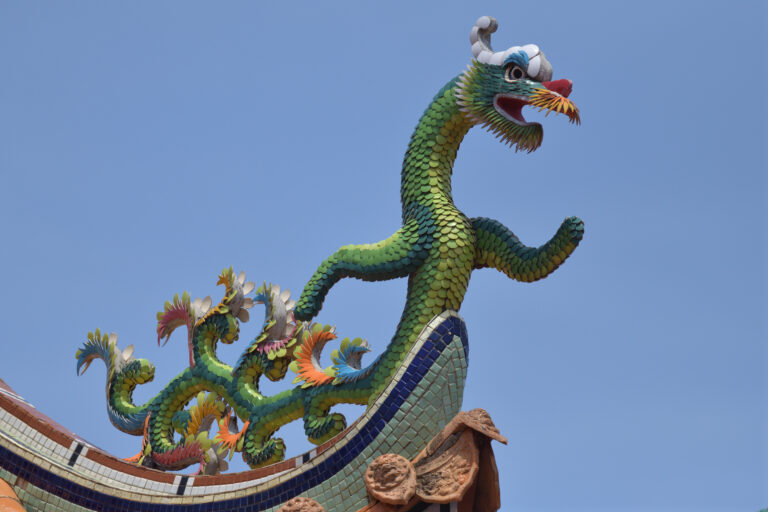

Last stop of the day is in an area of ponds with surface vegetation where we find several exotic Pheasant-tailed Jacanas, with golden napes and extravagantly long tails, as well as Oriental Pratincole, Grey Treepie, Scaly-breasted Munia and Black-collared and Chestnut-tailed Starlings.
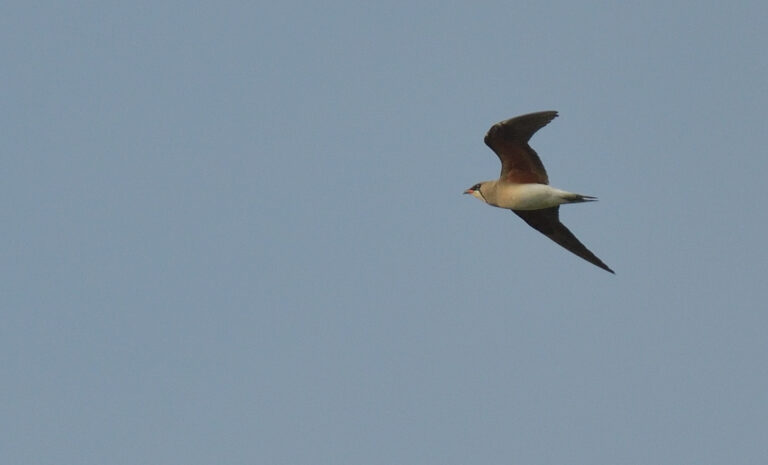
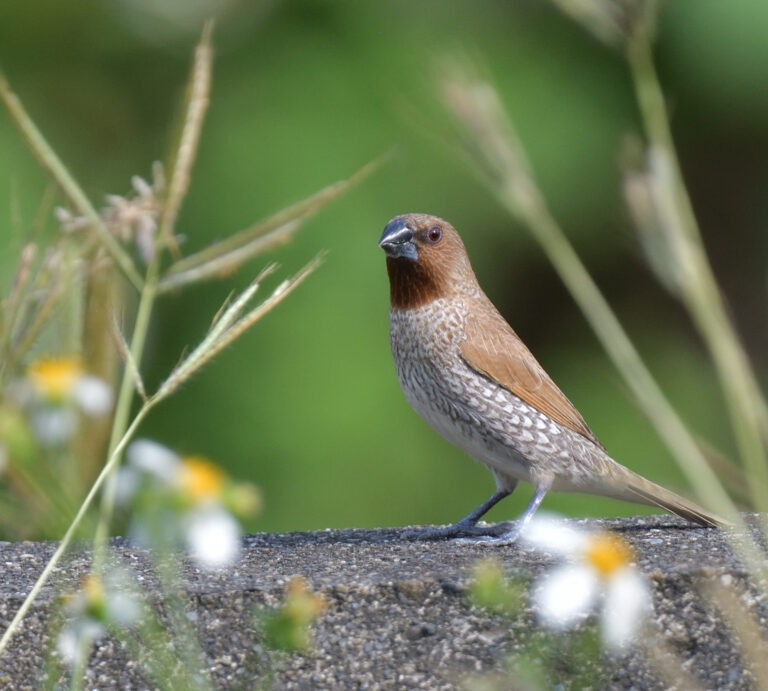
On our last morning in Taiwan, before we need to return to the airport this afternoon, we drive south on a mission to find Styan’s Bulbul which is restricted to the east coast of Taiwan, and off limits to us from the north end of the island due to disruption caused by the recent earthquake. After a two hour drive from Budai, we reach the Fangshan area, way down south, where we find a Crested Goshawk performing a wing quivering display flight, as well as Grey Treepie and then two Light-vented Bulbuls and a Styan’s Bulbul, but as this is in the hybridisation zone between Styan’s and the closely related and more widespread Light-vented Bulbul, we head a little further south where we find four good looking Styan’s specimens and no Light-vents, so mission accomplished.

On the return journey north to Tainan to catch the high-speed train taking us back to Taipei airport at a very smooth 179 miles per hour, we make a quick stop at Qijin Coastal Park, which is a small green oasis within a massive container port where the Urban Birder would be in his element. In just a few minutes here, we find familiar birds like Spotted Dove, Common Myna, Tree Sparrow and Light-vented Bulbuls of course, but also a nominate race Brown Shrike and a male Asian Koel, which is a large member of the cuckoo family, and our last new bird of the trip, bringing the final tally to 187 species, including all but one of the 32 species endemic to Taiwan, just leaving the Taiwan Shortwing, heard but not seen, as it is a ‘super skulker’. As well as these endemics, we saw ‘top drawer’ birds like Fairy Pitta, Black-faced Spoonbill, Asian Dowitcher and Little Curlew among a fabulous selection of 32 different waders, all thanks to our fabulous guides Kaiyote and Wu.
